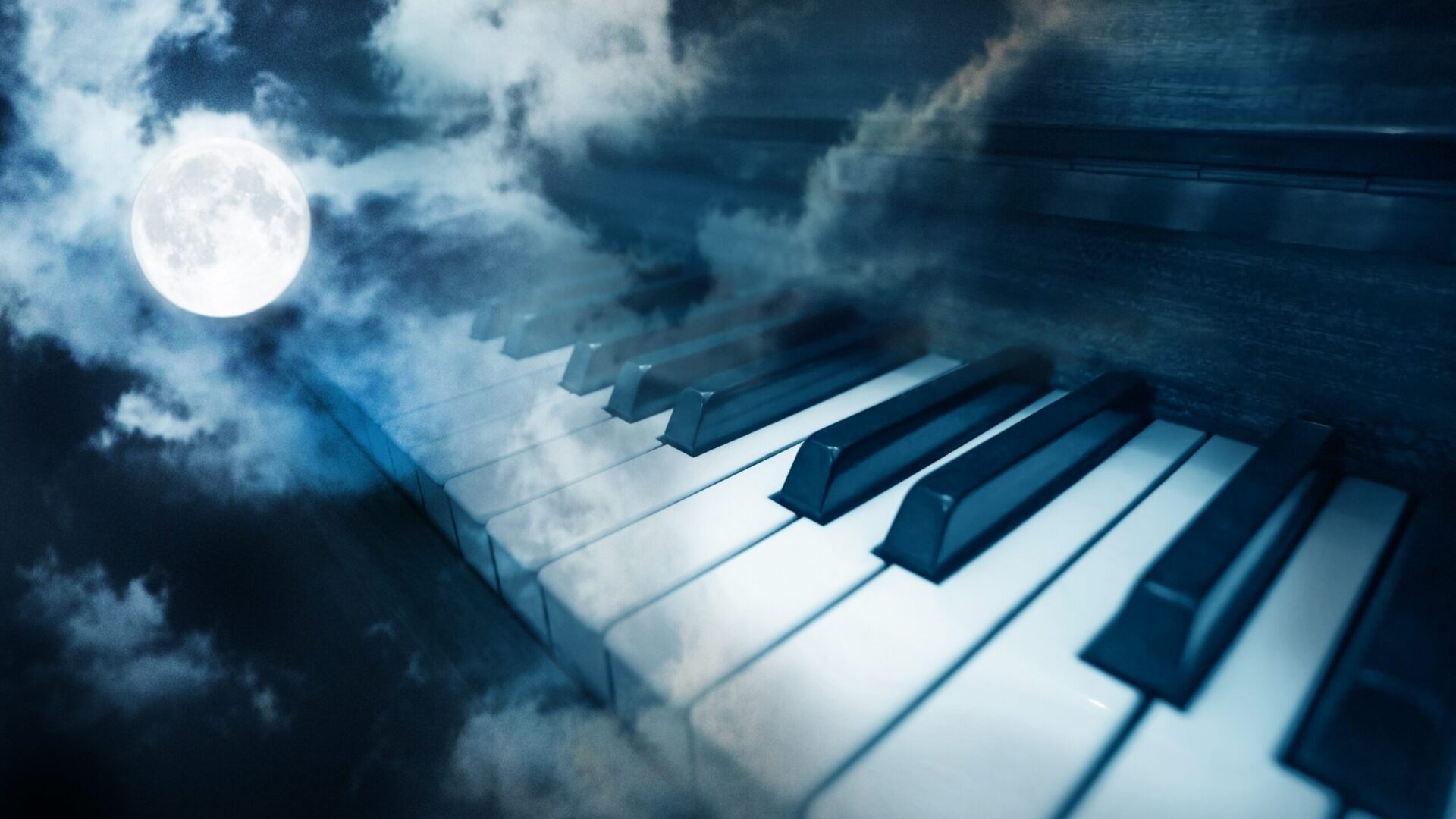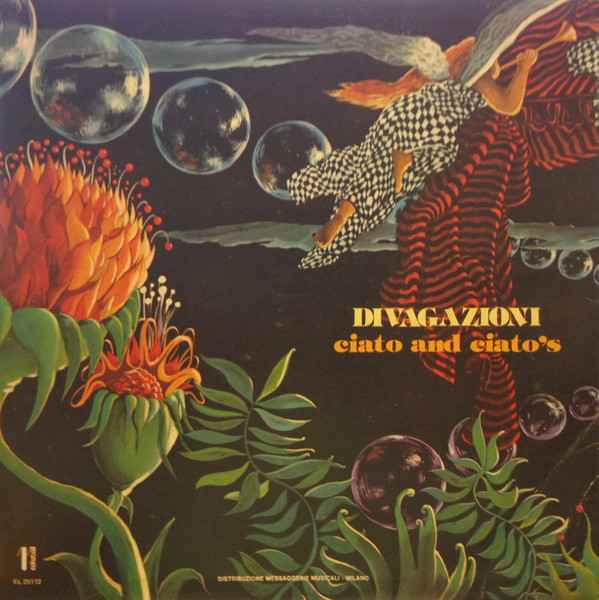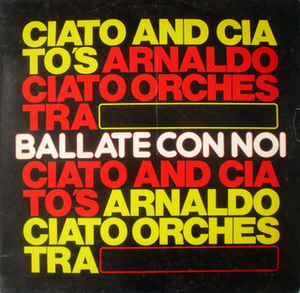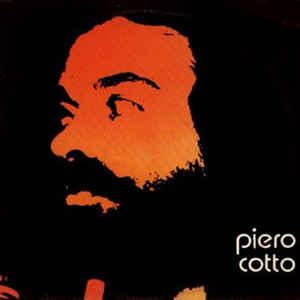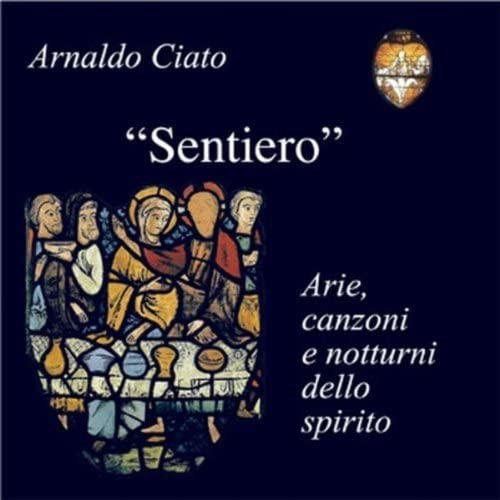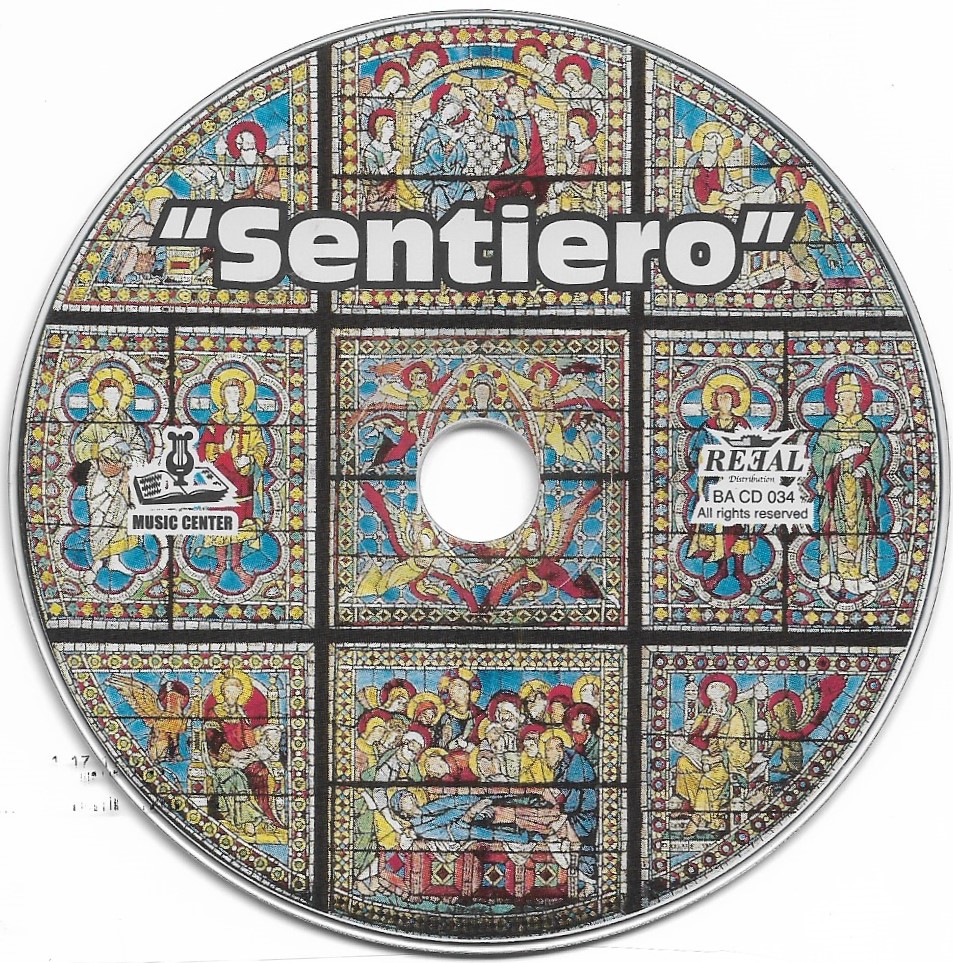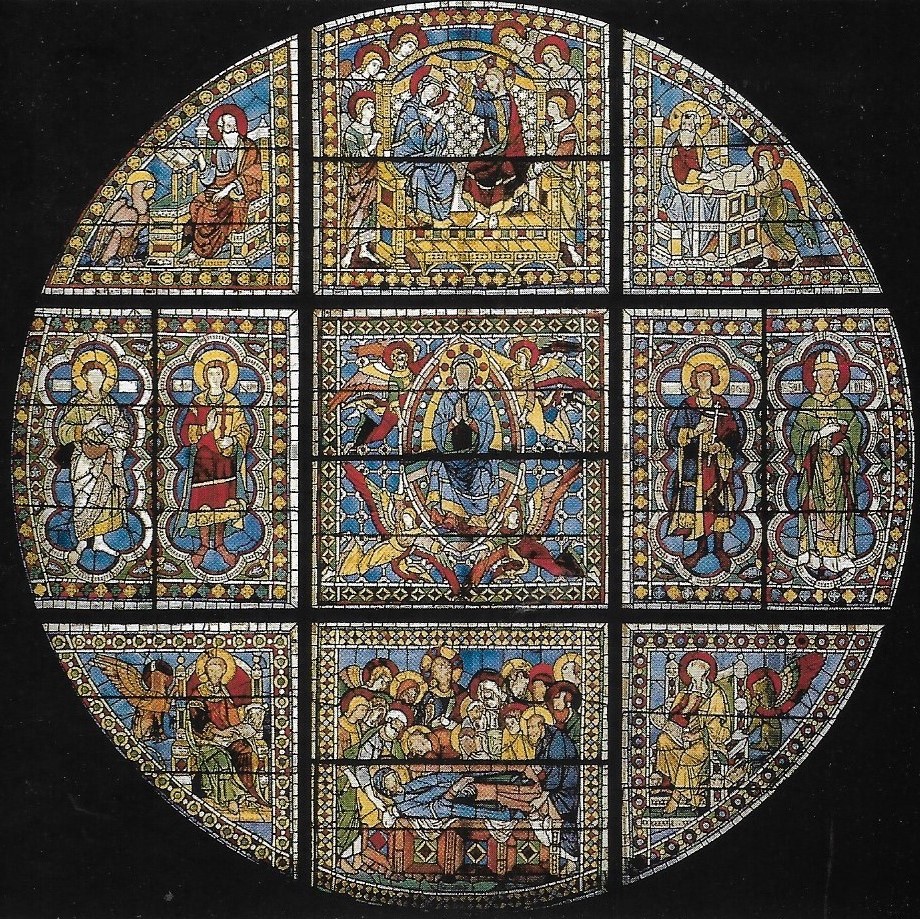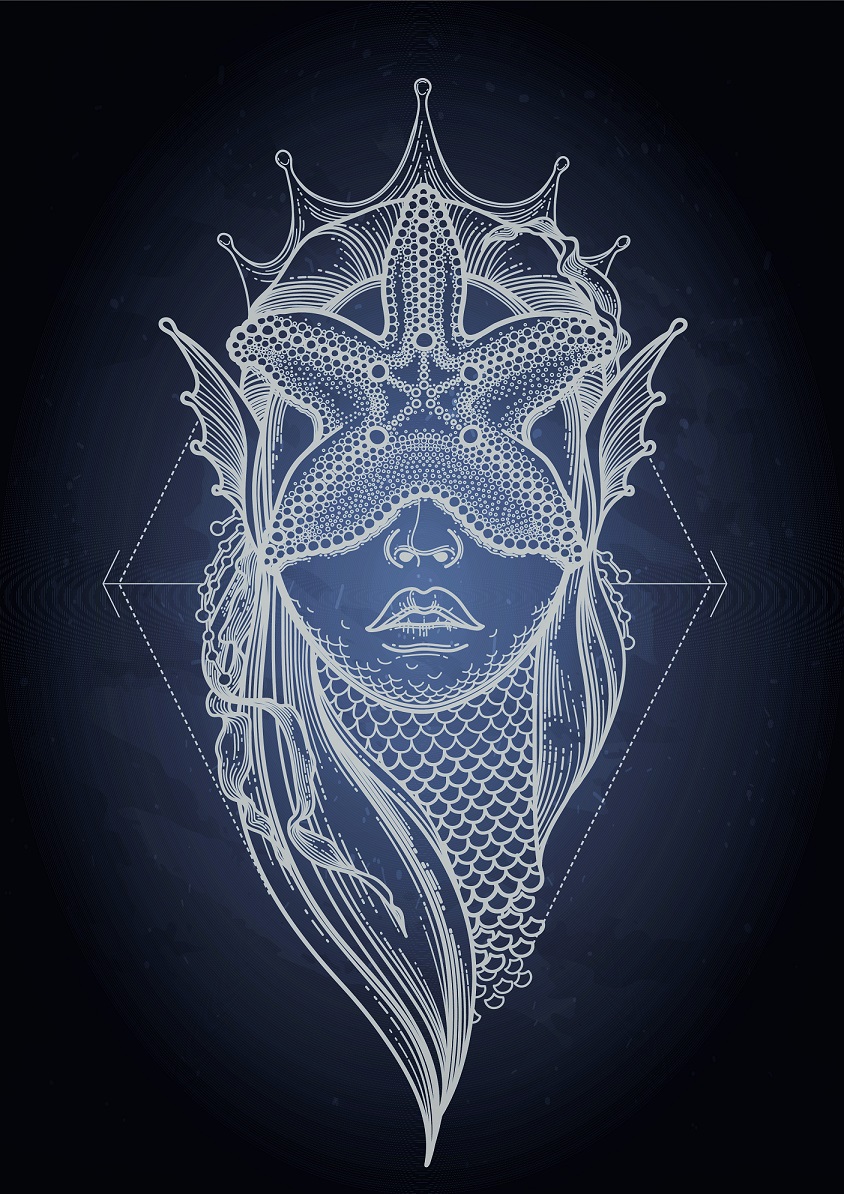
Sirens are the ancient symbol of musical attractiveness to the listener.
Their singing, especially at night, had an irresistible charm.
Hence their symbolic function in relation to music.
Introduction
Night falls!
You must choose!
Pick up a book?
Or you can read and listen to the ‘peculiar’ music of a musician from the second half of the 1900s, considered great but little known.
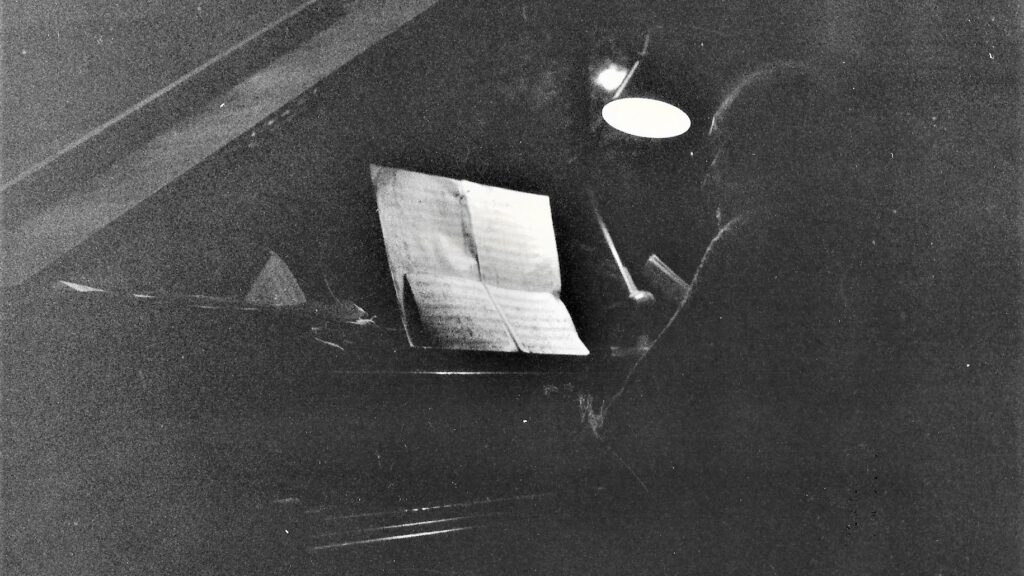
The name of this site is already representative of a trend, of a state of mind, of a particular world of dreamers, namely those who let themselves be seduced by a music close to the solitude of the night and its spells. In fact, what we are going to listen to does not coincide with a “daytime” listening but fills the soul of those who, instead, after concluding a day full of problems and toil, try to abandon themselves to the “nocturnal” pleasure that corresponds with the art of a musician like Arnaldo Ciato. An art rich with his compositions reflecting his most intimate nature, his moods, even his schedules, the fascination for the “big night”, when the most hidden thoughts of one’s “inner feeling” gather together. It must also be observed that all the compositions by Ciato we will listen to relate to last century, from the 1950s to the 2000s, and are an expression of that historical period.
The best choice: getting into bed putting on the headphones and dedicate at least a good hour to this listening; doing so the various sounds and sensations are perceived and we can abandon ourselves in the arms of Morpheus.
Of course we are talking about good quality headphones (the small earphones normally used for mobiles are often lacking in ideal frequencies). Why do we insist on the use of headphones? Because in recent decades, with the introduction on the market of various technologies aimed at perfecting the sound, a little bit of everything has happened: analogue, digital and so on and so forth, leading to sounds sometimes cleaner, but with a different impact compared to what the author aimed to. Unfortunately, if you are only technicians and not full-fledged musicians, you cannot conceive that listening to any musical genre needs an adequate environment. Opera houses were built with appropriate materials and studies and so were concert halls or open-air structures, as well as recording rooms. Ergo: good headphones reproduce, or at least partially approach, the frequencies desired by the musician or conceived in recording studios. The superficiality, or the haste to listen without adequate headphones, heavily compromises listening to the music featured here. If you listen to this audio material with tablets, computers, smartphones, (of course with headphones), turn the volume to maximum. If you listen to it with normal players, stick to the values we recommend step by step.
Enjoy it!
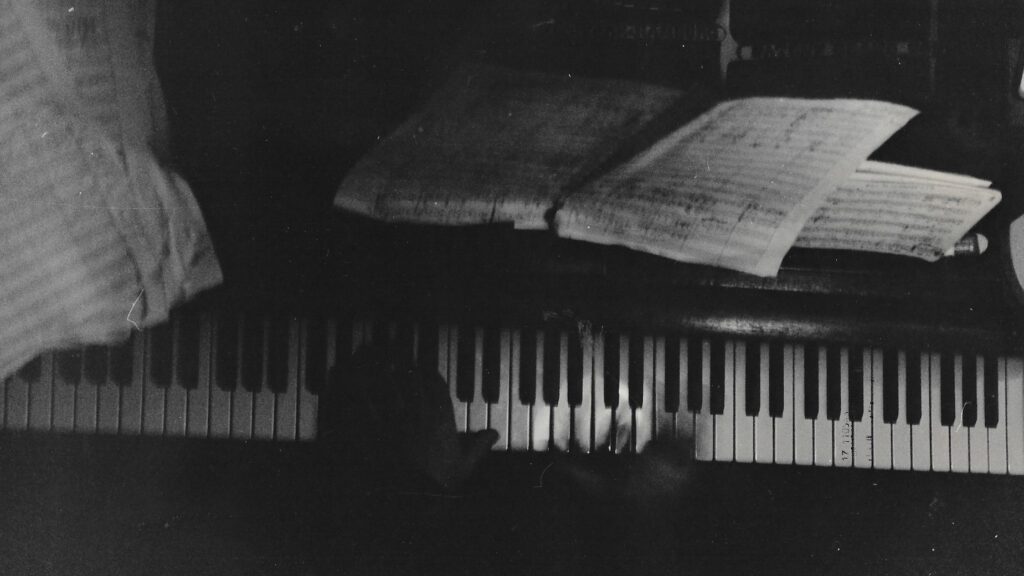
Arnaldo Ciato
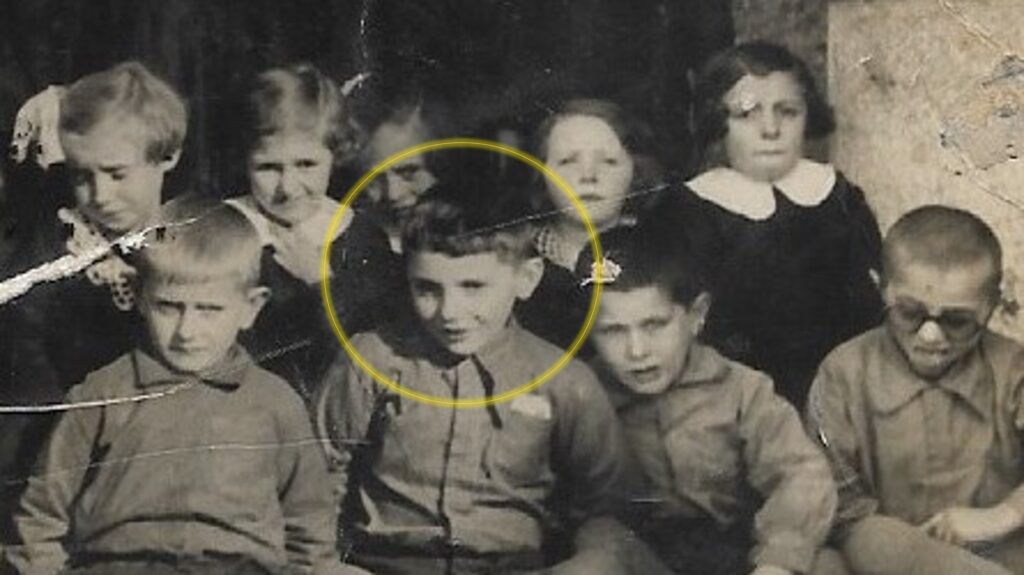
Arnaldo Ciato was born on February 20, 1932.
He is still musically active.
He represented a unique case in the history of Italian pop music and not only.
Considering the music of this author as pop music is extremely reductive. A large part of his compositions have their roots in the taste linked to musicals, jazz and symphonism.
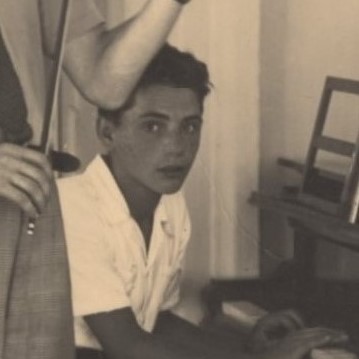
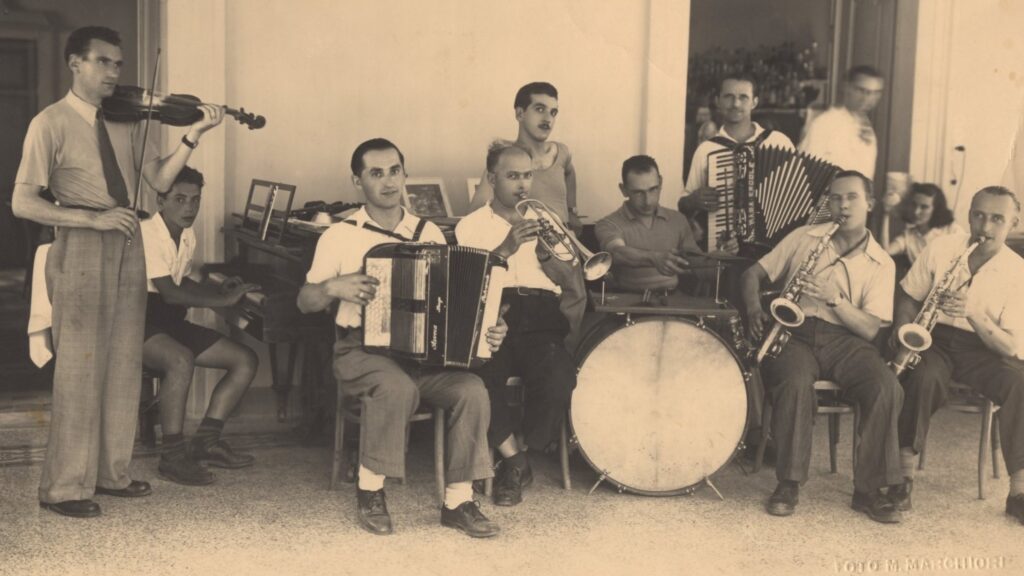
He started at a very young age, only thirteen, to perform as a pianist in orchestras linked to the “hangouts” popular with the crowds of dancers in the immediate postwar period.
He was probably the most important pianist the people could listen to in those places and in that historical period.
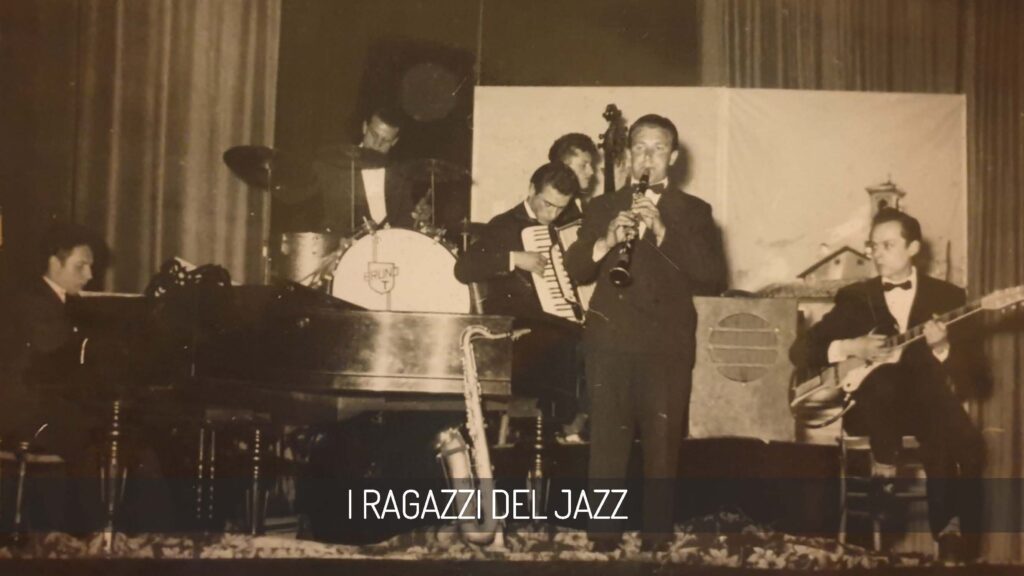
He was sixteen when he founded his own band of very young people called “I ragazzi del jazz”, with whom he used to perform in the various dance halls with the classic repertoire of American ballads and swing music, at the time very trendy thanks to boogie woogie.
The 1950s
In all the decades spent in nightclubs and in dance halls, among other things the most famous clubs of the time, Ciato tried to bring, with an important cultural intent and effort, a new and very different vision inside the musical genre that used to be popular in that environment and not only. His dream was to “free” the so-called “balere” (popular dancing halls) from a musical taste that he considered essentially banal, so to be improved, and instead involve the habitué to dance on more refined music. The intent was to make people appreciate pieces that had a classical-jazz derivation and partially influenced by the American trends imported to Italy in the post-war period.
He has pursued this project all his life.

The Ciato and Ciato’s
Ciato founded in the 1960s a famous band, the “Ciato and Ciato’s”, with whom he earned an excellent reputation in all the clubs where he performed and from the 1950s and ‘60s he began his recording period, in which several of his most important compositions appeared. The aficionado of the “Ciato and Ciato’s” often followed the group on their various trips. They were now used to and “in love” with that kind of pop music. Ciato has been, in the musical field described here, an authentic revolutionary!
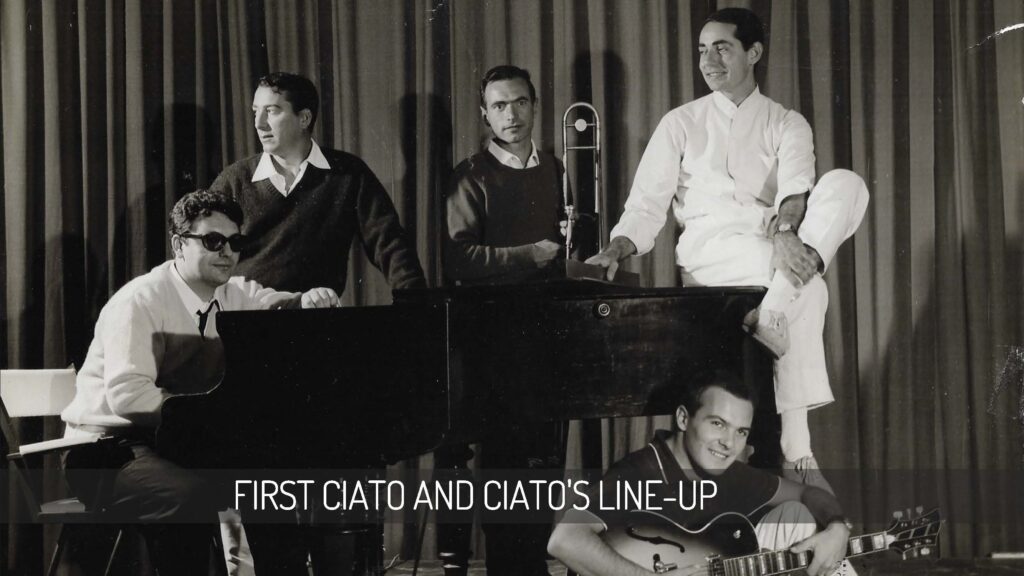
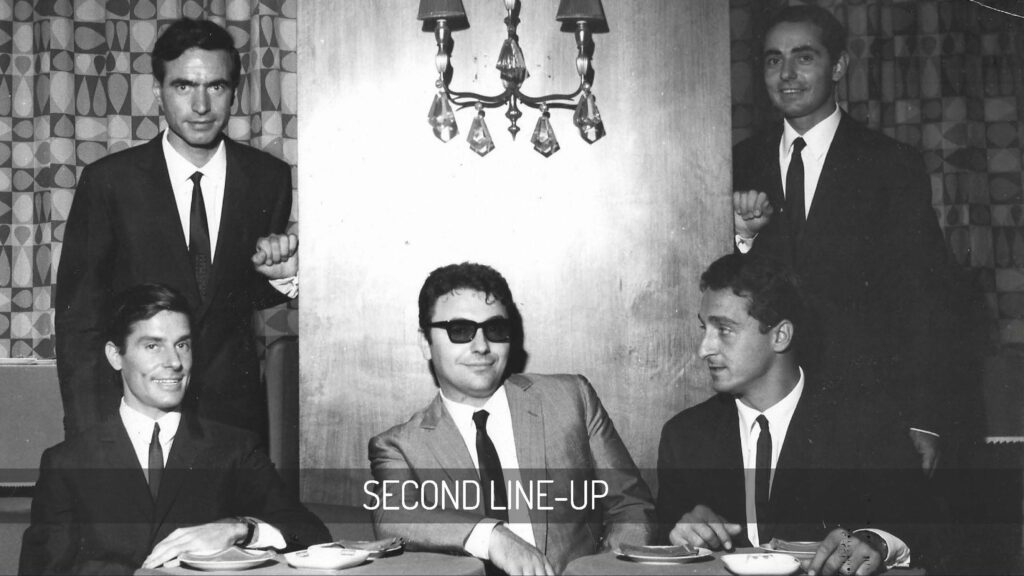
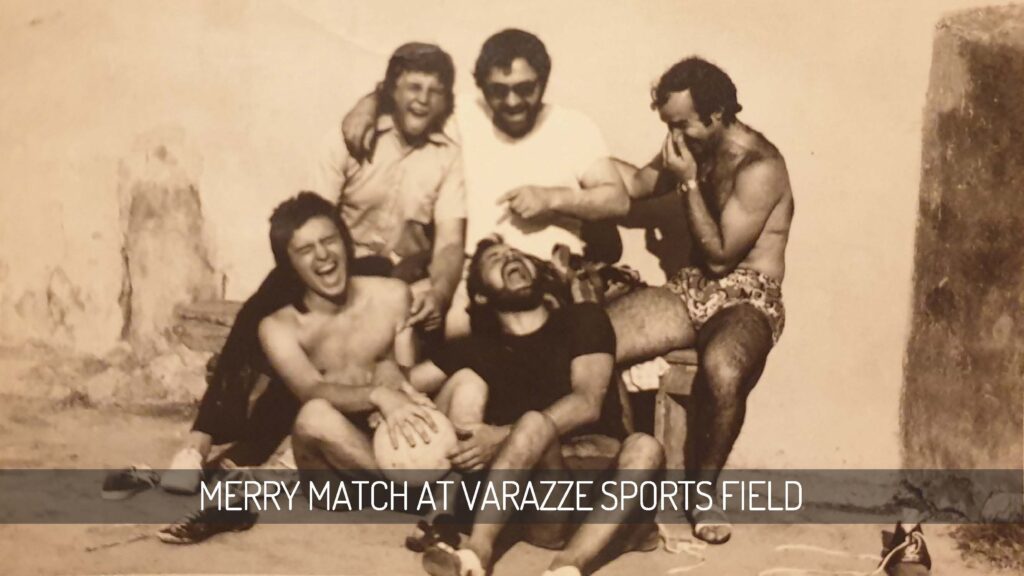
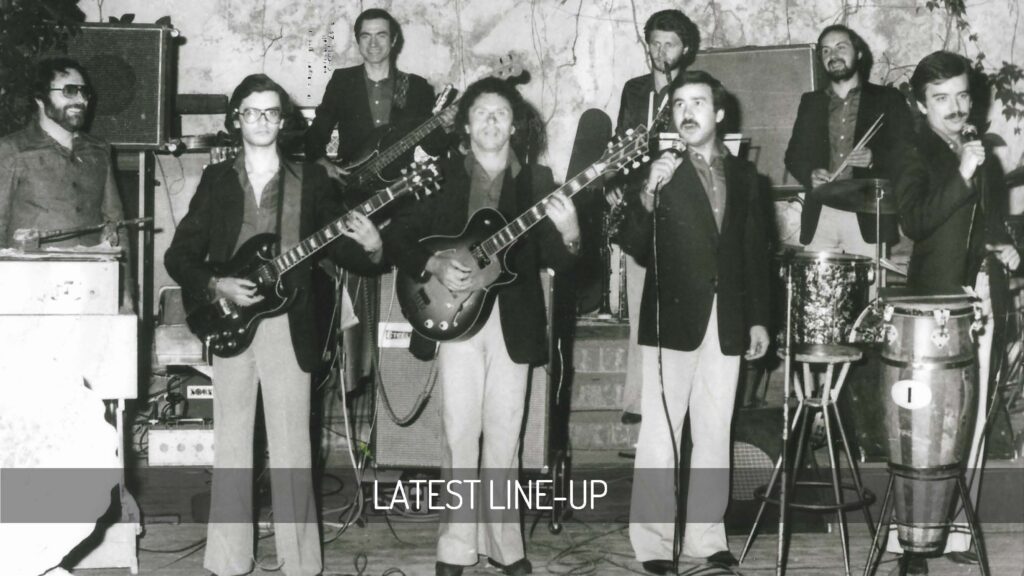
We called Ciato’s production “The Great Night Music” as almost all of his compositions are affected by his existential path. In fact, since the times of the first dance halls in 1945 until today, Ciato has been composing at night and sleeping during the day. He can’t help it! His biorhythms are completely reversed and the charm of the night, its solitude and its silence are for him fundamental!
In this site we will try, with the material found, to retrace the musical and cultural path of this important musician. We also had a booklet printed where Ciato himself tells his complex story in the world of music, pop music in particular. To get to know the personality of this artist better it is necessary to start from the fierce controversy of many years ago when he railed against some theories connected to the critical-aesthetic judgments of a certain “prevailing orthodoxy”.
Arnaldo Ciato argued that music could only be defined as “either ugly or beautiful”, regardless of genre and that it was not necessary, among other things, to establish whether or not the stylistic factor affected the value of a composition.
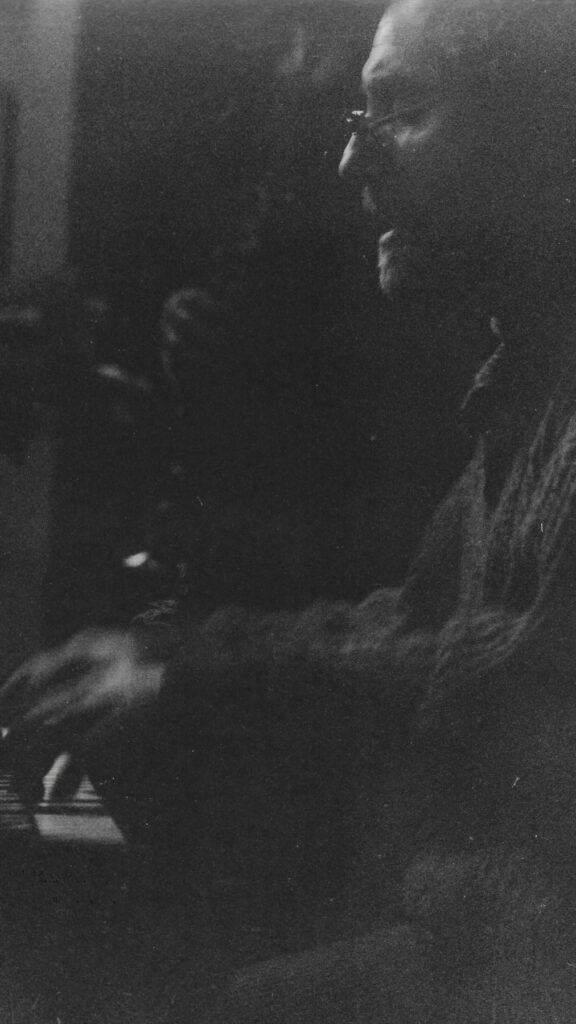
“When the musician, the artist gets the inspiration – it was his theory – he throws himself headlong into the realization of the same, with all the emotional wounds and contradictions involved! He pours his creative “fury” onto the work, essentially everything that is “inside” him. He doesn’t necessarily follow any stylistic implications.
The essential goal of the artist is to transfer the work itself from the “gut”, from personal competence and experience, to practical realization; it’s like giving birth to a creature! Ergo: the judgment on the validity of the work cannot be the style, which is for its own sake, but the emotional fact it produces. If any music, painting, or book gives you an emotion, it means that it has served some purpose. If this doesn’t happen, the product is only used to satisfy the ego of some authors, maybe very skilled on a technical point of view but not on an emotional level!”
In other words, Ciato argued, if a musical phrase, or any piece, can stylistically remind of Bach’s style rather than Beethoven’s, or Debussy’s or others, this does not prevent the music itself from being of such beauty or emotional intensity to be called a masterpiece!
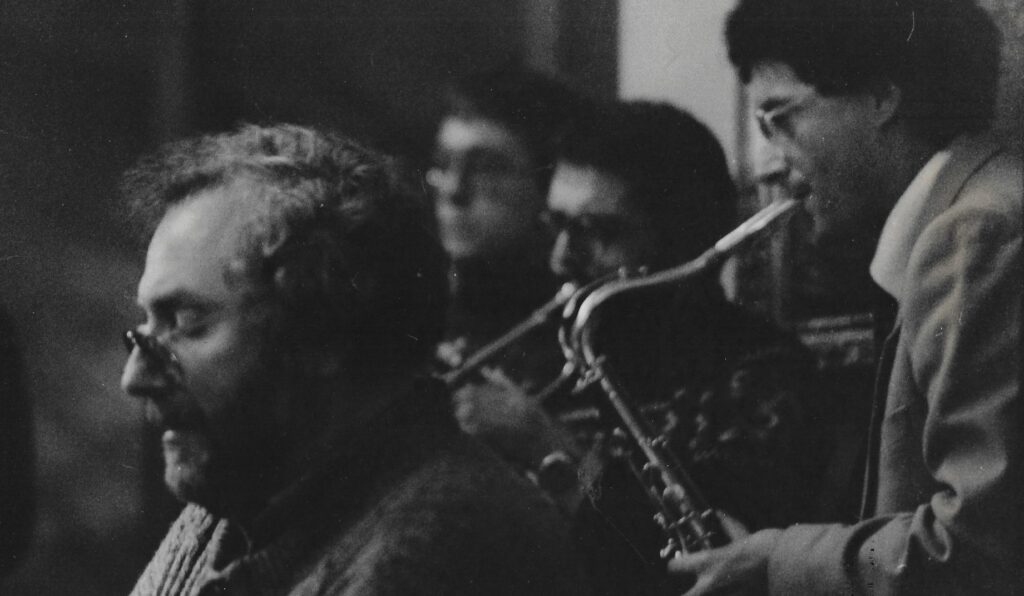
“The history of music is full of these situations in which we feel as if we were listening to something familiar. There are twelve sounds, the combinations in any case are not infinite, it can obviously happen, as it always has, that something recalls something else. It has been happening for centuries! No one has ever been scandalized for that! – Ciato goes on – The real question hinges on whether it is genuine plagiarism, which is prosecuted by law! On the other hand, when a composition stands with its own well-defined structure, it doesn’t have the same melodic line, the same harmonic foundation, the same rhythmic dynamics, the same overall sound as others, but it still creates an underlying emotional reaction, then the stylistic devices are of little use! It is useless to seek at all costs, in the evaluation of a composition, a stylistic predominance over a purely musical value!”
Not only that: Ciato concluded by arguing that nowadays every conductor of high-level listening music should feel the need, before each performance, to explain to the listeners with a short analysis what he will perform, thus increasing their interest and perhaps also the right perception of the artistic meaning, especially for the more complex and unusual musical forms.
Ciato’s friend Raf
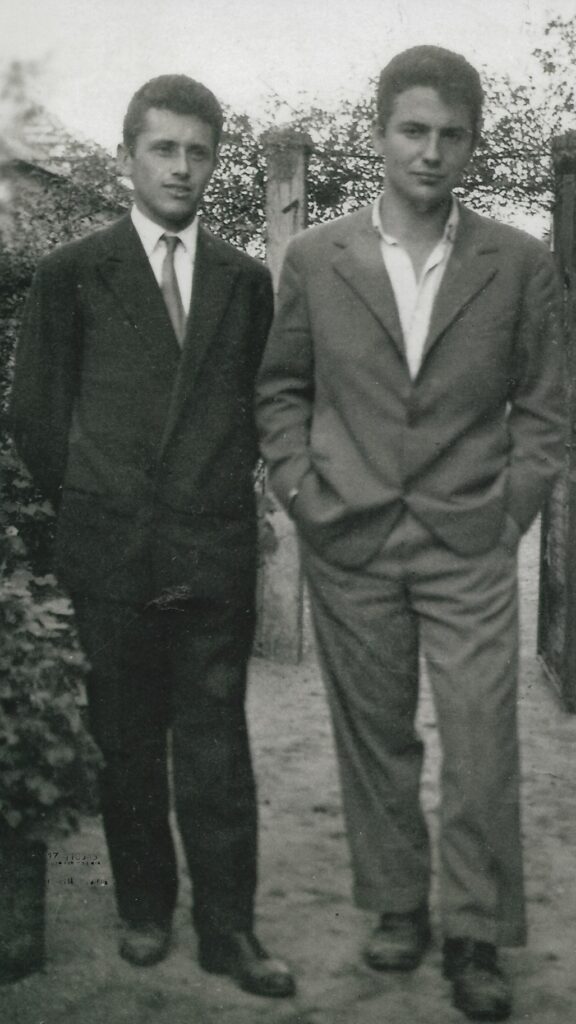
Here is a note with memories by Maestro Raf Montrasio, jazz guitarist and former guitarist of Renato Carosone, music teacher and fraternal friend of Ciato’s in their youth.
“Arnaldo Ciato is a musician perhaps not sufficiently known for his importance but, in some ways, one of the greatest in the history of pop music. Two, at least, his essential qualities: a remarkable and peculiar composer and finally an arranger among the most important ones in Italian pop music scene. He is considered extraordinary in the use of strings, both in sung and orchestral pieces, especially in the ballads and in the pieces where the atmosphere is pervaded by a certain “pathos”.
In many of his arrangements the strings “envelop” the singer in a kind of emotional blend that usually hits any good listener. In some moments the strings “entwine” the singer and the composition like ivy, forming a single body with all the rest of the musical textures. In short, a composition within the composition. I remember that if someone reproached him for the excessive function reserved to the strings, or the orchestra, he replied that <music, when it best fills a picture, ends up giving more completeness and emotion to the picture itself and the musician’s task is exactly this. The contrary can have a purely commercial but not musical justification and function, or a justification for those who do not possess these characteristics. Anyway, de gustibus!>
Being a musician grown up with classical music, he has always stiffened up at the lack of consideration, in pop music, of colours, of “diminuendo” and “crescendo”, of “piano” and “forte”, in short of all the nuances that from music reach the heart. For what reason shouldn’t the beneficiaries of the so-called “pop” genre be educated, for their own sake, to a more correct and more emotionally useful listening? At least in the ballads and in the most suitable songs? Ciato’s musical nature is often pervaded by a melancholic and lyrical modern romanticism or even by liberating explosions of a rhythmic-jazzy nature. For me this is his greatness!”
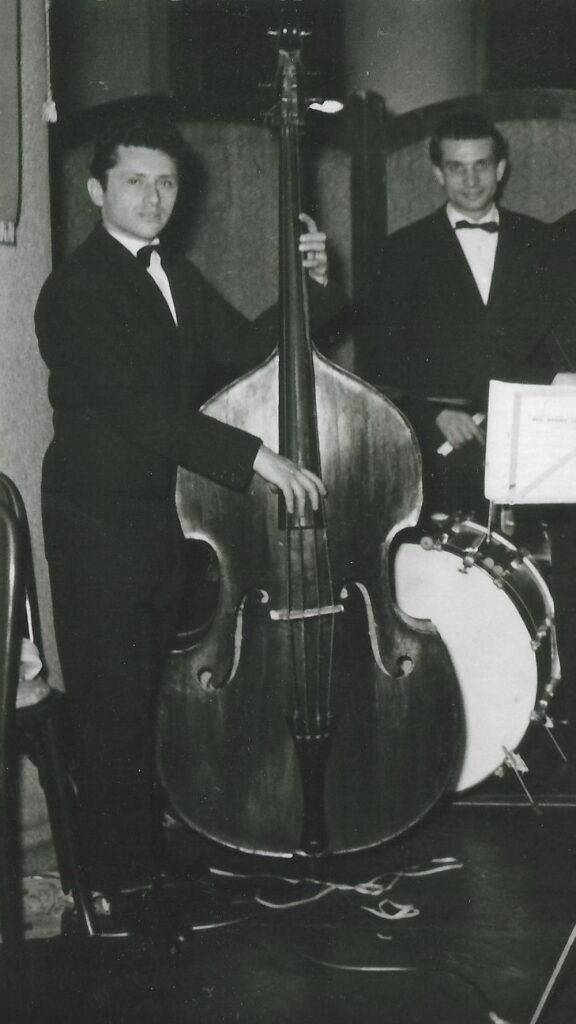
One of Arnaldo Ciato’s key concepts is: “Definitions such as cultured music, serious music, high level music are genuine nonsense, of no use to broaden the musical knowledge, but which often risk alienating any possible listeners. Music has only two definitions: good or bad! The rest is all talk of esthetes or patter merchants!”
Rediscovered pieces
Recovered pieces that can be listened to, downloaded and in some cases found on CD or vinyl:
- One collection of pop music (1960s,’70s,’80s) from “Divagazioni” and “Ballate con noi” (Ed. Eleven).
- “Ciato Suite” (Musical) 1990s.
- Some improvised live performances by Ciato on the piano, with clear jazz contaminations. The collection is called “Piano jazzando…e altro”.
- “Sentiero”. A very secular Ciato composing pieces imbued with spirituality in the 1950s,’60s,’70s,’80s,’90s. The same Ciato who will be argueing for decades to be desperately in search of God, especially with the music through a series of spirituals based on the defense of Jesus. (Edizioni A.Brocca).
- Messa da Requiem (1990s).
- I Notturni (1960s,’70s,’80s,’90s). A precise example of the fusion of classical-jazz language interpreted by Ciato.
The music composed from 2001 to 2020 for the Theater Company “I Legnanesi” is not present on this site as it belongs to a musical genre different from those we are dealing with here, as well as many old compositions that couldn’t be found. They will be added as soon as they are traced.
For all the compositions that can be downloaded, a link will be shown, while it will be possible to request all the others by an e-mail which will be provided.
It is once again recommended to use the headphones, better if of good quality, to listen to all the music on this site. The reason for that is: headphones have produced a much more complete effect in normal listening for years, thanks to the higher frequencies. This is even more true for this music, especially the more recent one, where the “piano” and “forte” could sometimes lead to an incorrect use of the volumes. We just need to plug the headphones into a normal player and set the listening volume at around 70-80% (it depends on the characteristics of the player itself and the natural potential of the listener to reach the above-mentioned frequencies).
Even more important will be an introductory reading of the relative and exhaustive reviews of the individual songs to be listened to, exactly in the framework of what the author has always claimed.
The 1960s,’70s,’80s
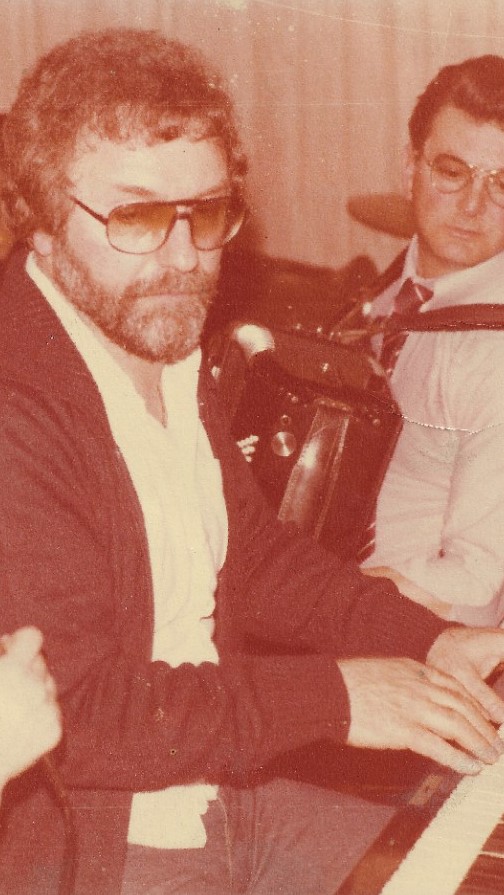
Given that Arnaldo Ciato’s compositions are hundreds and not all traceable, we will put on this site all the material actually recorded and what was on old music cassettes found here and there, even if the quality of listening is obviously lower.
Hereafter we have selected four pieces of pop music from the 1960s,’70s,’80s, composed and arranged by him, specially chosen because some of Ciato’s peculiarities in the use of strings are already clearly evident in these pieces. The songs were taken from Compilation 1 which you will find later and which contains a total of thirteen pieces of different styles.
FEATURED SONGS
“IMMAGINE”
Ballad from the 1970s sung in English by Piero Cotto with the title “Can you imagine”. It is a composition based on the lyrics of the singer-songwriter Dario Desi. The atmosphere is very yearning. Here you will be given a sample of Ciato’s well-known skill in lining his arrangements with a very personal use of the strings. In fact in this piece he shows a great sensitivity to their colour and he uses, with the entire section, a violin and a cello as dialoguing soloists within the musical structure, creating an engaging global atmosphere. Here he wanted his friend Raf as a violinist because, according to him, not being a real violinist he reminded him of the poor and uncertain sound of street violinists, their wide, melancholic and poignant vibrato. Very beautiful!
Link for purchase: Amazon and iTunes
“ARIA PER ELISA”
(1960s) Wonderful song dedicated by Ciato to his young wife. It emanates a very classic and poignant atmosphere. The theme is performed by a harmonica and the strings are the real protagonists of the performance. It was presented by the publisher Aldo Pagani at one of the world biggest music industry fairs (Midem) and it is said that a German group interested in it, at the end of the listening, stood up to applaud.
Link for purchase: Amazon and iTunes
“LONG WAY TO THE SACRIFICE”
(1970s) Composition by Ciato which photographs his drive for unusual musical forms in pop music. Closer to film music, it was born from a poem by Dario Desi translated into English and interpreted by one of the “Ciato and Ciato’s” singers, Claudio Borroni. The latter had joined the group when he was only 19, specialising in the interpretation of songs stylistically close to the groups of the time (Beatles, Rolling Stones etc.) and has recently approached jazz. This song is quite internalized and the dark and somewhat desperate image of the drug world is present. A picture of the compositional sensitivity and the rich sonic variety of Ciato’s arrangements. Here the ‘Ss’ in Claudio’s voice have been deliberately altered by the sound technician to obtain a hissing and quite sinister effect on the whole vision of the theme. Amazing.
Link for purchase: Amazon and iTunes
“QUESTO SILENZIO TUO”
(1990s) It is perhaps the most intense song of the album “Sentiero” (Ed. A. Brocca) of which it is the spearhead. It is part of the pieces of great spiritual research by the very secular Arnaldo Ciato. It is the story of a woman who, over the years, loses the presence of God within herself and who realizes that all this entails for her an immense existential void. So she raises a desperate prayer to ask for this void to be somehow filled. The interpretation by Patrizia Ferrari, former “Ciato and Ciato’s” female singer, is intense. The atmosphere created by the orchestra is beautiful, as well as the usual perfect use of the strings.
Link for purchase: Amazon and iTunes
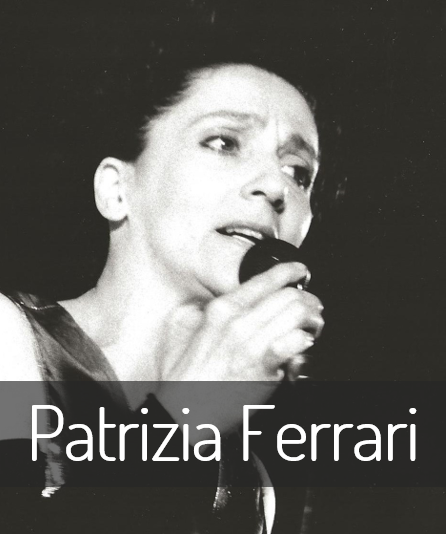
COMPILATION 1 Link for purchase: Amazon and iTunes
It is made up of 13 songs, dancing pieces included, obtained from different recordings, skilfully mixed.
“HER”
“NADA DE NADA”
“ARIA PER ELISA”
“IMMAGINE” (version with English text “Can you imagine”)
“CIATO BOOGIE”
“FRATERNITÁ’”
“LONG WAY TO THE SACRIFICE”
“CANTINA BAND”
“RAGAZZO MIO”
“TURQUOISE”
“SIAMO SOLI”
“HANNIBAL OF THE ALPS”
“QUESTO SILENZIO TUO”
All the musical material of these collections has been obtained from the following long-playing albums: “Divagazioni”, “Ballate con noi”, “Piero Cotto” of Edizioni Eleven and “Sentiero” of Edizioni A. Brocca.
Of course, given the fact that the pieces belong to different periods (therefore they were not recorded in the same studio and often not even refined), the various sounds are different from each other.
COMPILATION 1
“HER” Wonderful piece by Ciato (late 1960s, early ‘70s). The atmosphere created by the orchestration and the beautiful voice of Piero Cotto are important, as the singer had a vocal timbre that was almost absent in Italy at the time, a baritone voice like Isaac Hayes or Barry White. Just because of these characteristics Piero Cotto used to record everything in English, more suited to his vocal style. Cotto had fallen in love with this song by Ciato after listening to it sung in Italian by the author himself. He decided to interpret it with English lyrics but on the same musical base, adding only a central jazz solo by a good guitarist. Gorgeous performance!
Link for purchase: Amazon
“NADA DE NADA” (1977) Song by Ciato based on few measures by the fraternal friend Raf Montrasio. Raf was his youth companion, a jazz guitarist of considerable importance and musicality, formerly Carosone’s guitarist in his last tour abroad, a true artist who on various occasions played with Ciato for at least thirty years. The song is part of the many dancing songs that entered the repertoire of the “Ciato and Ciato’s” and it must be listened to from this perspective. Since the cha-cha-cha was very fashionable at that time, it had a great success in the dance halls. It focuses on an initial theme, some riffs between piano and orchestra and a unique and beautiful guitar solo by Raf himself.
Link for purchase: Amazon
“ARIA PER ELISA” see previous review.
Link for purchase: Amazon
“IMMAGINE” see previous review.
Link for purchase: Amazon
“CIATO BOOGIE” It is a classic boogie woogie, composed by Ciato at the end of the 1940s and performed here with a Big Band that reinforces the “Ciato and Ciato’s”. It was widely used by this band in the dance halls of the time and modified in the duration to allow the many couples of dancers, who challenged each other, to show off all the series of evolutions typical of this genre. Here Ciato gives proof of his great pianistic ability.
Link for purchase: Amazon
“FRATERNITÁ” (1960s) It is quite a particular song: Ciato listened to the cue of an unknown young Neapolitan singer-songwriter and was struck by the first lyrics and by the attack of the theme. He decided to put it to music and, adding some variations to the lyrics, he arranged and recorded it in the 1970s. Here is very important the vocal interpretation of Nicola Francone, singer of class, sensitivity and substance, added to the “Ciato and Ciato’s” in 1970 and who stayed with them until the band split. The atmosphere that accompanies the execution is remarkable.
Link for purchase: Amazon
“LONG WAY TO THE SACRIFICE” see previous review.
Link for purchase: Amazon
“CANTINA BAND” (1977) The composition is by John Williams, great musician, author of the soundtrack of the film “Star Wars”. The producer Aldo Pagani, given the success of the film, asked his friend Ciato to produce it with a particular arrangement and with a whole series of variations on the theme. In the performance Ciato highlights his confident and lively piano skills.
Link for purchase: Amazon
“RAGAZZO MIO” (late 1960s but recorded in the ‘90s) It belongs to the CD “Sentiero” (Edizioni A. Brocca). It is an intense and controversial piece. It outlines in the text and in the vocal interpretation of the same Ciato the great disappointment for certain theses which emerged in that period and the heartfelt invitation to a hypothetical boy of the time not to listen to the many false prophets that surround him but give a meaning to his own existence. Very important piece, performed on bossa nova rhythm and considered, by some, a small jewel.
Link for purchase: Amazon
“TURQUOISE” (1970s) It is the transposition of Mozart’s famous Turkish March into dancing style. The producer Aldo Pagani asked for it to his friend Ciato who added a performing cameo by his friend Raf on the guitar and recorded it with the “Ciato and Ciato’s”.
Link for purchase: Amazon
“SIAMO SOLI” This song is the Italian version of “HER”, the opening song of this compilation. Here it is sung by Ciato himself. Intense atmosphere with Italian lyrics, as bitter as the music.
Link for purchase: Amazon
“HANNIBAL OF THE ALPS” It is part of an imaginary re-enactment of the historic descent of Hannibal across the Alps. Developed in the form of a bolero, vaguely ravelian, it tries to musically convey some ancient sensations. It was composed by Ciato and recorded with the “Ciato and Ciato’s” in the 1970s.
Link for purchase: Amazon
“QUESTO SILENZIO TUO” see previous review.
Link for purchase: Amazon
The 1990s
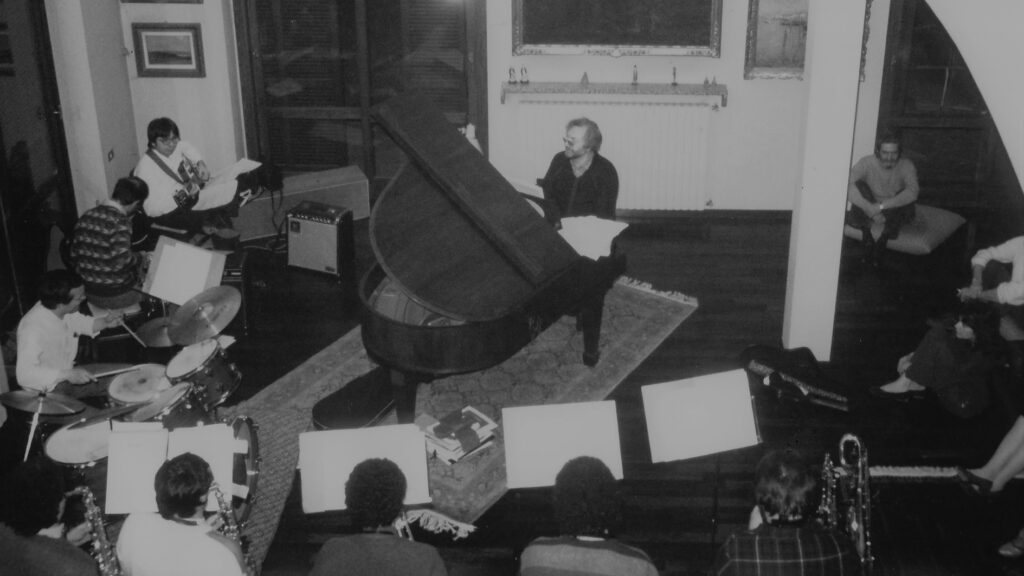
“CIATO SUITE”
(Musical of the 1990s) (Ciato suite 1,1bis, 2, 3, 4, 4bis, 5)
In 1996 and 1997 Ciato composed a Suite in the form of a musical, with a 1950s setting and which, after vanishing for a long time into thin air, was rediscovered after more than twenty years by one of the vocal protagonists, the singer Nicola Francone. It was found on a music cassette and considered unfinished from an organic and mixing point of view, therefore not a refined recording. In addition to this, “fake” instruments were also used to complete it, due to a lack in economic resources to do otherwise.
Ciato explains: “The story of this musical is complex and vaguely mysterious. It was born with the collaboration of an English lady in her fifties who worked for various music publishing houses in Milan and reported to me by a musician friend. This lady was in charge of translating into English several lyrics of Italian songs destined for the foreign market. She was, as we said before, a real lyricist.
After listening to the story of my project and the music already composed, she got excited and set to work.
One summer evening she came to see an open-air concert where, among other performances, we played the musical pieces of this fledgling musical with the texts already completed by her in English. Since the execution was somewhat successful the lady returned home enchanted, promising me to complete the work in a short time. For reasons still mysterious today I have never seen her again! I asked about her to the musician who had introduced her to me. He enquired about her in Milan, asking the various publishing houses. Upshot: she had suddenly left for England, she had returned to her Country, no one knows for what urgent reason. She literally vanished, leaving no trace.
And so this musical, born in English, remained there, in the shade, for a quarter of a century. Given its rediscovery I intend to re-propose it musically, at least in the finished songs, even if there is no recording with a real orchestra and a real mixing. I’ll add a clarification: this work, registered as “Ciato Suite”, therefore without an official name yet, had in fact a very peculiar structure, it was not an actual musical but the unusual story of two couples of singers, a pop music one and an opera one.
The beginning of the performance sees a man, a pop singer, walking along a tree-lined avenue. At one point he meets a beautiful young woman standing on a sidewalk on the street and instinctively comes to her asking something.
From this banal approach it turns out that the woman is also a pop music singer but that, due to existential events, she ended up “walking the streets”. The situation makes the whole question intriguing, even on a human level. While this couple are talking about their personal stories, they are by chance approached by another couple, asking for information. From this casual encounter we learn that this second couple is also made up of two singers, but opera ones, a tenor and a soprano, and a little bit older.
The two couples make friends and decide to go and celebrate the event in one of the most beautiful clubs in the area, a kind of very popular show and dancing hall overlooking the sea, where, in addition to dancing, great numbers of Vaudeville and other performances follow one another.
Fascinated by the atmosphere, at a certain point they decide to go onto the stage and perform in public: first the pop music couple with a delightful swing, immediately followed by the two opera singers who, with a performance and music more suitable to the their vocal style, come together for a beautiful ending, in a quartet, with opera-like music. All four achieve considerable success, which strengthens their occasional friendship. Since the beach is a few meters away, at the end of the evening the two couples leave the club and approach it and, looking at the night sea with a magical summer moon, they complete the Suite singing the same ending performed previously. The English lyricist still had to complete only the acting parts, that is everything that should work as a link with the music, but her disappearance made this impossible. However, I decided to promote the listening of this musical, even if after many years, also for its historical-musical value! “
The succession of various and different musical situations exactly represents the different scenic and theatrical changes.
Vocal interpreters: for the pop music couple Patrizia Ferrari and Nicola Francone, for the opera couple Virginia Guarino and Edmondo Ruisi.
Link for purchase of Suite: Amazon and iTunes
Jazz
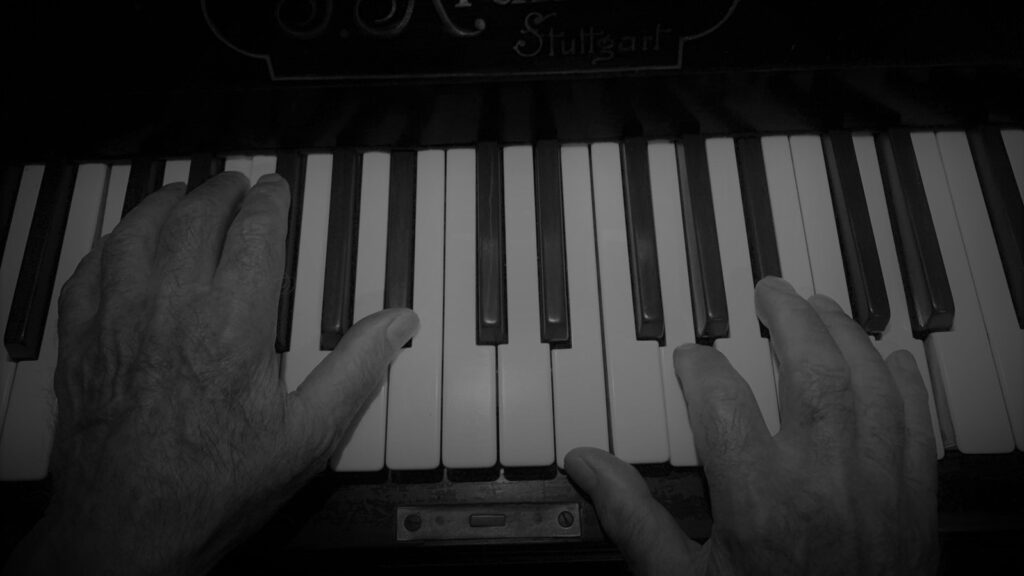
“PIANO JAZZANDO … E ALTRO”
These are five performances by Arnaldo Ciato on the piano in live concerts. They have been assembled as they testify to his passion for jazz and his pianism linked to this genre. These five performances highlight his stylistic change over the years: 1962, 1985, 1987, 2016 and 2018. This last concert, in favour of a very young autistic pianist, was performed at the age of 86, with no more practising the instrument.
Ciato tells that his passion for jazz dates back to the late 1940s.
The piano models that conquered him are essentially those of three giants: Art Tatum, Oscar Peterson and Erroll Garner. As you will hear, these are impromptu recordings. That of 1962 was recorded with makeshift means of the time, on a little stage of a dancing hall. Sonorities, therefore, a bit poor and confused where the important solo of Ciato in Peterson’s style stands out anyway. If the first two performances, of 1985 and 1987 from Europa Radio Jazz, see the artist as more a researcher, in the last two of 2016 and 2018 you can hear Ciato now over eighty, closer to Art Tatum and Erroll Garner, who participates in two particular concerts. The first was organized at Manzoni theater in Busto Arsizio (Varese) and was a commemorative event for his brotherly friend Raf Montrasio, who died on 23 October 2015, at the age of 86.
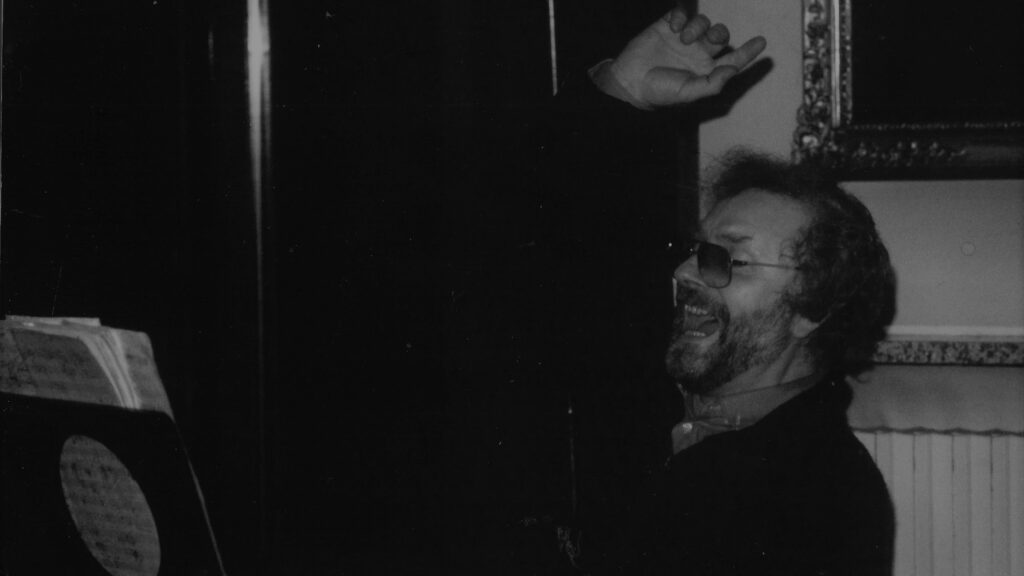
On that occasion the 30 October 2016, among the many participating musicians his old orchestra mates also took to the stage. The “Ciato and Ciato’s” met again after many years and the emotion was tangible. In spite of not having the time to rehearse properly, the band agreed to play two well-tested, signature songs from some earlier decades: “Yesterdays” (by Jerome Kern) performed in a trio (piano, bass and drums) and “What’s New” (by J.J. Johnson) . For this event the band was composed of singers Claudio Borroni and Nicola Francone, bass player Fabio De March, drummer Flavio Pedrazzini and Maurizio Longoni, soprano sax. At the end of their performance the organizers also projected on a special screen some footage with Raf talking about his friend Ciato. There is also a video of this concert (see link). Listening to these pieces the type of Ciato’s pianism, which many describe as “stride”, is evident; this performance offers an extra compositional example by our Maestro. Final note: the performances of Kern’s “Yesterdays” have always been part of Ciato’s piano repertoire who had fallen in love with this piece after hearing it for the first time on Radio RAI in 1953 performed by great Art Tatum; since then the piece has been basically present in all his concerts.
In this collection we have selected three versions, taken from different music cassettes throughout 35 years.
Link for the purchase of “Piano jazzando…e altro”: Amazon and iTunes
- 1962: ‘’Dedicato a Peterson’’
Link for purchase: Amazon
2. 1985: EUROPA RADIO JAZZ, ‘‘Yesterdays’’
Link for purchase: Amazon
3. 1987: EUROPA RADIO JAZZ, ‘‘32’’, ‘’Autunno a Milano’’
Link for purchase: Amazon
4. 2016: Concert in memory of Raf, ‘’Yesterdays’’, ‘’What’s New’’
Link for purchase: Amazon
5. 2018: Last live concert at Giuditta Pasta Theater in Saronno (Varese)
Link for purchase: Amazon
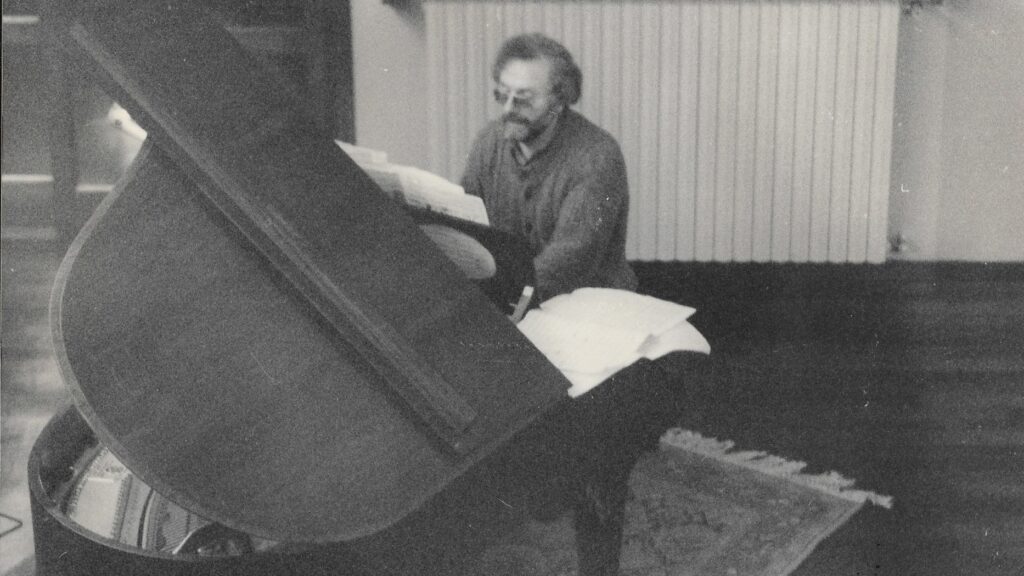
Paths of the spirit
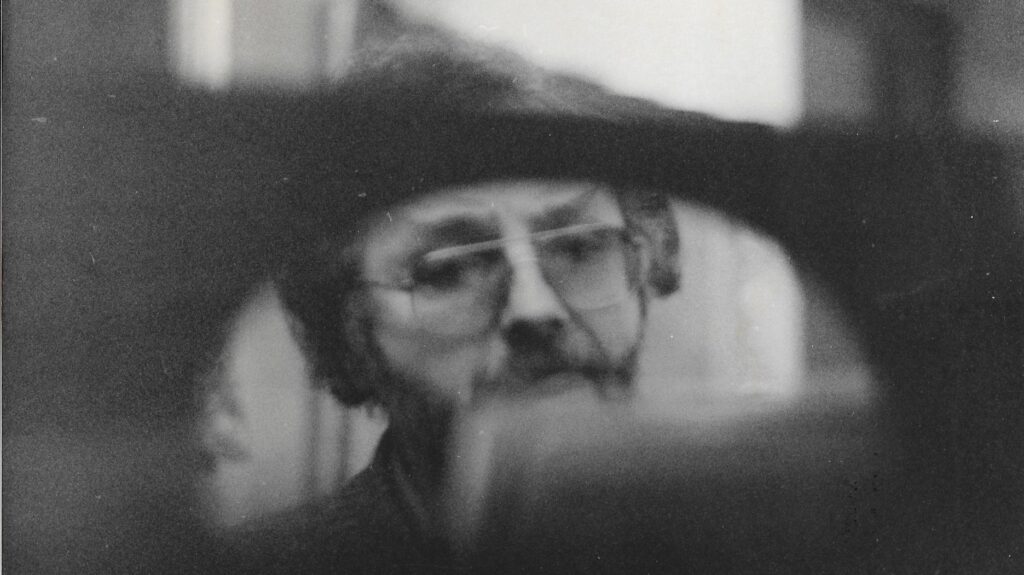
A man in search of God. A layman who follows his pathway, a journey lasting fifty years, facing anxieties, doubts, hopes, sometimes despair, the obstinate, inexhaustible research, moments of bewilderment as well as fervour, questions and invocations, longing for something that can lift the veil in front of him.
The end of his labour is getting closer, a new awareness makes the certainty of the approach of the event grow inside him, namely the answer to his questions. A mysterious, inner signal, made up of secret voices and intimate sensations, suggests looking back and retracing his steps, collecting the experiences he has lived, as a testimony. But the man is a musician, his world is made up of notes and poetry. The time has come for him to bring together his musical compositions, scattered over time, which have accompanied and helped him in this particular unceasing quest.
In fact, after the CD “Sentiero”, the logical and final conclusion of this spiritual journey will be the monumental Messa da Requiem.
Sentiero
Arie, canzoni e notturni dello spirito (Ed. A. Brocca)
“Man, woman or boy: if by chance you should
happen to listen to this CD,
do it in the evening, before going to bed, perhaps it will help you too to search for God.
I don’t know if this is a safe path for everyone,
for me it has been so for half a century.
I hope that, thanks to this work, you can find it, somewhere.
It is the only reason for my work.
Thank you.”
Arnaldo Ciato
Link for purchase: Amazon and iTunes
STRUCTURE OF THE WORK
The musical themes collected in this CD cover a period of half a century. Some were composed after the war and in the early 1950s, others are very recent; the stylistic diversity between them and the different sounds due to the various eras and the small recording studios are evident here, too. The order of the pieces in the CD does not follow a precise chronological itinerary, but a thematic path that tries to compare and alternate different styles and musical genres.
AN INTERPRETATIVE KEY
Within the work four fundamental figures emerge clearly who interpret the pieces: a man, a woman, an old man and the choir. These are symbolic figures to whom to entrust the sense of universality of the themes. Each of these figures represents themselves without a notion of time or place: the man, the woman, the old man (to whom the author curiously and for autobiographical reasons lends his voice) and the choir (collective presence and metaphor of the community), have exactly this function. In some themes (“Vieni o mio Dio”, “Padrone delle cose”, “Buon Natale a voi”, “Sentiero”) the four figures are often integrated into the single composition, alternating in the interpretation of a unique literary text, witnessing the universal character of the contents.
“QUESTO SILENZIO TUO”
A woman, from the depths of an oblivion that has lasted too long, suddenly discovers the immense emptiness that surrounds her and, feeling God almost erased from her existence, launches a desperate invocation. The theme, of lyric-symphonic inspiration, opens and closes the CD with two different versions: the first interpreted by a pop singer, Patrizia Ferrari, the second by an opera singer, Virginia Guarino. This choice of opening and closing entrusted to the figure of the woman emphasizes her fundamental role within the existential problem that inspires this work.
Link for purchase: Amazon
“O SIGNORE TU”
Man’s astonishment at the discovery that Christ came into the world for him too. The theme is of lyrical intonation and Christmas inspiration, the interpreter is Marcello Merlini.
Link for purchase: Amazon
“AVE MARIA”
Inspired by a musical idea of a young friend and pupil, Arturo Paro, substantially included in the first notes of the theme, the author developed this composition giving it a nocturnal atmosphere, thus obtaining an interpretation that was first intimistic and then poignant and intense. Patrizia Ferrari sings.
Link for purchase: Amazon
“PADRONE DELLE COSE”
God’s presence is felt in everything around us. The symbolic figures representing humanity are witnesses of this presence. The piece is interpreted by Patrizia Ferrari, Nicola Francone, Arnaldo Ciato and the Choir “La Soffitta”.
Link for purchase: Amazon
“QUELLA CROCE”
Song entirely dedicated to the figure of Jesus, where music and lyrics blend admirably in recreating an atmosphere of pain for the ingratitude and betrayal by too many men towards the One who gave his life for their salvation, finally addressing a sort of heartfelt prayer to Jesus himself so that he can perform a last miracle for their undeserved redemption. Of course, all this is experienced as a simple, desperate hope. Patrizia Ferrari and Arnaldo Ciato sing.
Link for purchase: Amazon
“JESUS”
From a text of very few and repeated words in Latin and then in Italian the author draws a singular composition that initially sees a choir interpreting, in a very ancient environmental situation, a theme with an evocative flavour over a very slow tempo. At the end of this theme the author, through a rhythm close to our times and which seems to arise out of nowhere, leads the protagonists, singer and choir, to ideally converge in our age, as in a unified journey through the centuries. This is done by means of a current and rocking theme which, using the same words and without betraying its spirit, will eventually lead the composition itself to a fusion between the initial ancient theme and modern rhythmics. In the finale everything is attenuated and the choir takes us back in time, just as it all started. The Choir “La Soffitta” and Patrizia Ferrari sing.
Link for purchase: Amazon
“BUON NATALE A VOI”
The universality of the Christmas event lived through the truest emotions that all peoples, in every time and place, have felt and feel in the enchanting feast that commemorates the advent of the son of God. The piece is a Christmas song par excellence and is interpreted by Nicola Francone and the Choir “La Soffitta”.
Link for purchase: Amazon
“VIENI MIO DIO”
Two voices intertwine in a prayer. An old man recalls the far and near most important moments in his life. A young woman helps him with his reminiscence, supporting his tired voice as a sort of link with the present. The old man prays God to reveal himself to him, allowing him to end his long and painful existence in peace with himself. The piece is interpreted by Arnaldo Ciato and Patrizia Ferrari.
Link for purchase: Amazon
“SENTIERO”
The long journey ends ideally. The old man feels a sense of premonition he does not escape from, on the contrary he faces what appears to be the most dramatic moment of his existence letting the complexity of his state of mind emerge. Serenity, irony, a bit of madness, a veil of melancholy, a resigned expectation and the anxiety to find in time the path that will guide him, accompany him in these moments. The old man with his characteristic voice softens the anguish of the event by asking, first to another old man like him, then directly to God, the safe way to reach him. The musical structure of this piece is unusual. A simple and apparently playful melodic theme overlaps an obsessive rhythmic carpet, while a woman’s voice acts as a counter melody. The result is a blend expressing the various moods present in the lyrics. The piece is interpreted by Arnaldo Ciato, the female voice is Patrizia Ferrari.
Link for purchase: Amazon
“CIELO”
The endless light blue, in its purely physical and aesthetic evocativeness and beauty, is charged with metaphysical nature and spirituality becoming the goal of everyone’s prayers and hopes. The piece is interpreted by Edmondo Ruisi and the Choir “La Soffitta”.
Link for purchase: Amazon
“RAGAZZO MIO”
A boy is faced with the problems of our time. An old man, through his experience, tries to find out what in his opinion are the causes of the great malaise that undermines the boy’s ability to give meaning to his life. A generational confrontation with no claim to speak of absolute truths, but an invitation to seek some answers in God. The piece is interpreted by Arnaldo Ciato.
Link for purchase: Amazon
“UNA NOTTE E TU”
The old man tells of his last nocturnal encounter with an ancient little pagan temple lost in the woods and which over the centuries has become a small Christian church. A magical and enchanting place where in his youth he used to go at night and listen to the mysterious voice of the silence that spoke to him of God. After many years he finds the little church abandoned to itself, devastated by the neglect of man and the disfigurement of the woods that protected it. A wound opens in him that will never heal again. A dreamy and evocative musical fresco interpreted with a reciting voice by Arnaldo Ciato. The piece was composed in 1949 and although it seems to be at the margins of the context of the work it represents for the author, a layman, the primitive spark that gave impetus to his very personal search for God.
Link for purchase: Amazon
“QUESTO SILENZIO TUO”
It is the lyric version of the initial performance. The soprano Virginia Guarino sings.
Link for purchase: Amazon
“SIGNORE ASCOLTACI”
Prayer, invocation, in favour of a mutual friend in serious danger of life. Co-written by Ciato and Nicola Francone (of the“Ciato and Ciato’s”) and sung by the tenor Emilio Noli and the Choir “La Soffitta”.“La Soffitta”.
Link for purchase: Amazon
Messa da Requiem
Listening guide to the Messa da Requiem by Arnaldo Ciato
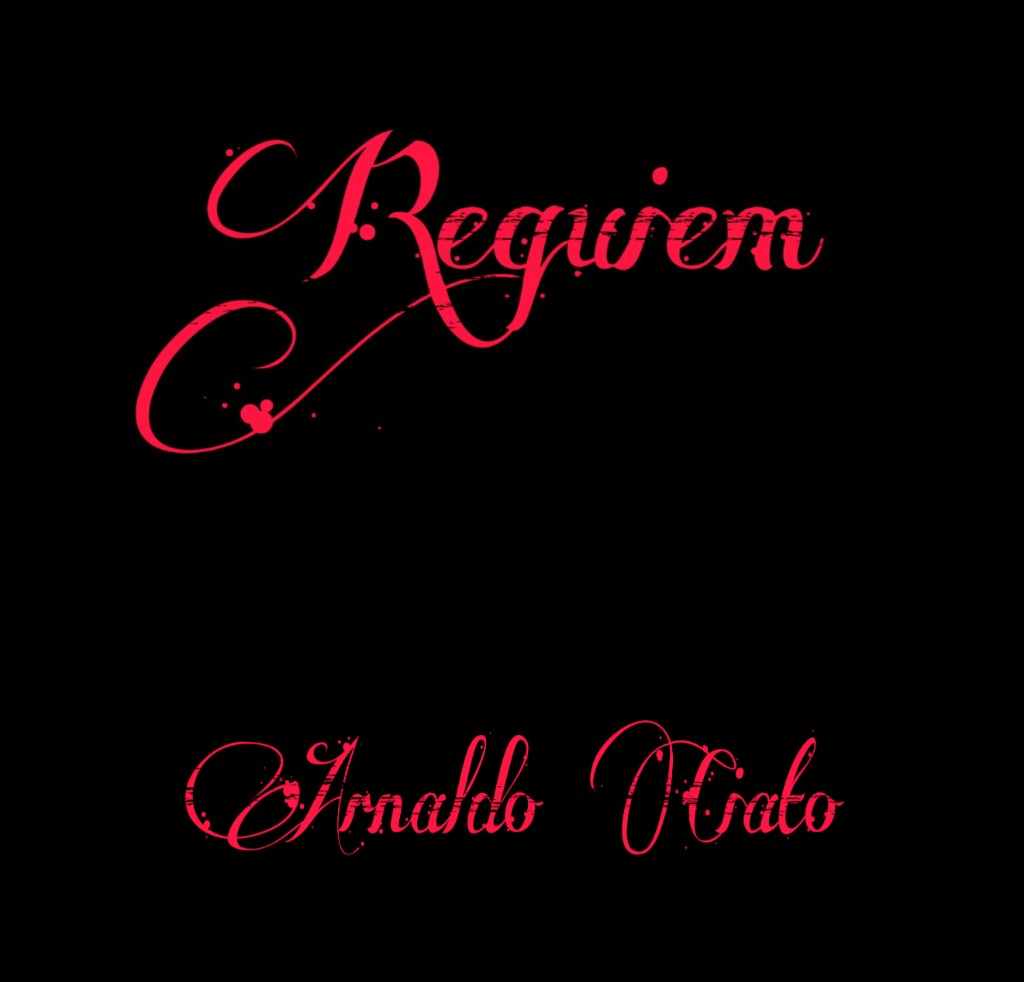
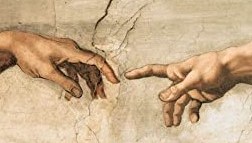
Link for purchase: Amazon and iTunes
The preventive reading of the opinions that will follow favours important ideas for a possible realization of the Messa da Requiem as part of a scenic project. Ciato would have liked to redo the mixing but reasons of force majeure prevented it. The real protagonists of this gigantic and modern work are two: choir and orchestra. Within the choir three particularly significant figures stand out: a tenor, a mezzo-soprano and a baritone, the latter in the guise of a hypothetical officiant, that is the one who, in our case, leads most of the thematic attacks on a religious-interpretative level. The three soloists are the vocal emanation of the members of the same choir and were chosen on the basis of their vocal timbre, which was considered most suitable for this particular work. Actually, a real choir of at least 120 people would have been needed but, due to technical and economic problems, this was not possible.
It is a Requiem Mass with possible theatrical implications and some affinity with the musical. We think this mass is the only case where, within it, the Latin lyrics are also sung in a phonetically calculated Italian translation.
Don’t make the mistake of listening to it before reading all the details listed here.
This very particular musical work requires, furthermore, to use headphones of good quality. The risk is to lose all the dynamics that distinguish it, including the “piano” and “fortissimo”.
The various technological devices used for listening are not always adequate to grasp the expected effects.
Taking into account the sounds that vary from “pianissimo” to “fortissimo” in this musical genre, we recommend an average listening based on 63% of the potentiality of normal players and listening at maximum volume of other players (computers, tablets, smartphones).
“MESSA DA REQUIEM”
Reviews by various musicians and experts
Maestro Roberto Salvalaio
Conductor, composer, teacher, musical director of the Opera Theater of Ulaanbaatar, conductor of the Philharmonic Orchestra of Bacau, who adapted Astor Piazzolla’s music for his symphony orchestra:
“Ciato’s Messa da Requiem is very beautiful, it has a fascinating harmonization, it is the result of a gigantic recording work. There is a remarkable musical path. Performing it live is not easy, it would need a choir of over a hundred people, an exceptional orchestral complement and maybe six months of rehearsals.”
Letter sent on 27/11/2018 by Maestro Salvalaio to Ciato:
Dear Maestro Ciato, I have read and played on the piano your “Requiem” sent to me in a handwritten score and I must say that I was very impressed especially by the idea that you imprinted onto a work like this. I noticed that inside it there is a multiplicity of styles covering a range of various musical genres, certainly the result of your experiences as an interpreter that make this work interesting and full of surprises both for the instrumental ensemble and for the choral part. Given the intense orchestration both for the number of performers and the sound volumes, I believe we must necessarily think of a choral ensemble of considerable size in order to balance the sound weight of the orchestra. Of course, we might also think of reducing the parts, but it would be a real shame to do this, sacrificing the effect of the massiveness of the whole. Therefore, I suggest you, also by virtue of the fact that an orchestra and choir of considerable size would have exorbitant costs, to think of a “virtual” orchestra, that is to use digital samplers that today have reached levels of excellent quality, so as to be used also for the production of soundtracks of important films with great savings of time and money for their realization. In this way you will also be able to reduce the number of choristers and make everything more accessible and achievable without altering your idea which must remain as you conceived it. I congratulate again on your work and I wish for you to be able to realize it as you feel it inside, without removing anything, but remaining as faithful as possible to the intentions expressed in your score. Kind regards. Roberto Salvalaio
Maestro Aldo Pagani
Musician, talent scout, publisher and producer of Astor Piazzolla:
“The Messa da Requiem by Ciato is beautiful, modern, universal and with exceptional musical glimpses”.
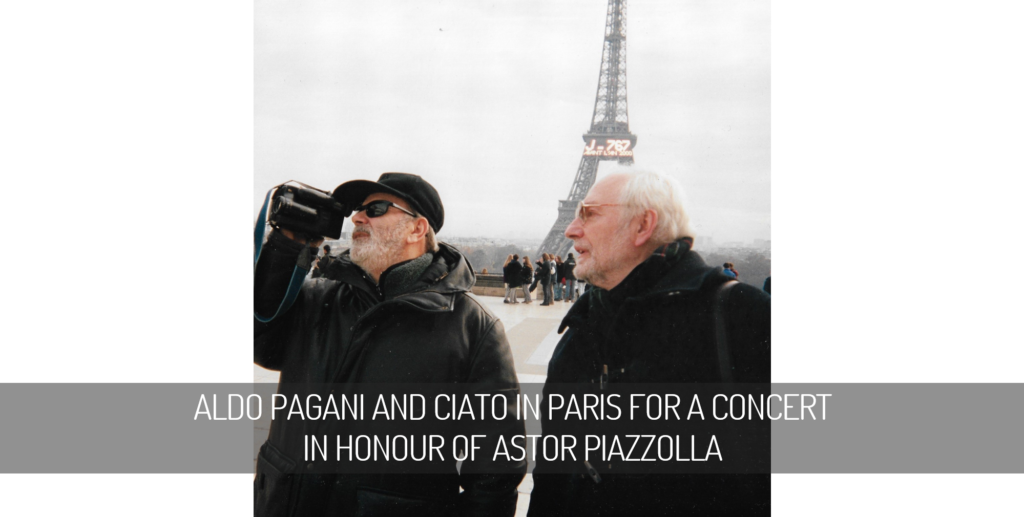
Maestro Raf Montrasio
Remarkable jazz guitarist, formerly part of the famous Renato Carosone’s band, for years a music teacher at Collegio Arcivescovile of Saronno (Varese), a very fine and highly sensitive musician; he had the opportunity to listen to it before passing away:
“Ciato’s Messa da Requiem has an unusual beauty, at times moving, at times dramatic. It reflects a musical path that goes from symphonism, to musicals, to jazz tradition – especially in the harmonization – and even to pop music: exceptional. A masterpiece to me.”
Maestro Lorenzo Imporati
Multifaceted pianist with a jazz background:
“I have listened to Ciato’s Messa da Requiem several times and have always felt the same emotions. I have often been amazed by the harmonization, beautiful, modern and unexpected, when compared to the genre. I have also been sometimes excited by the powerful musicality that emerges in each piece. It should be translated into images”.
YUNKYU KIM
Korean tenor:
“The Messa da Requiem by Ciato is an ancient and modern religious drama”.
Maestro Mauro Bravi
Headteacher of the music courses as well as president of the Association “La Città Sonora” in Garbagnate Milanese-Saronno (Milan – Varese):
Dear Maestro Ciato, Here are some of my remarks for the creation of a show with the music of your last composition, Messa da Requiem. First point: the arrangement of the strings is such a good level that I would not feel the need for an original orchestration, but thanks to the help of computers and technologies I would use the same bases for a live performance. I think instead that the percussion part is very interesting for which I would not give up the use of musicians and would make it live with those instruments that have solo parts. All this should reduce the performers to no more than ten. I would adopt the same solution for the choir, using the base so the solo live voices would be enough. Second point: The whole work would instead be strengthened and would have a greater interest from the public if it were supported by images broadcast live accompanied by music, not to reduce its importance by putting the music itself in the background, but to reinforce its impact given that the musical texture and the character of the work are close in taste and experience to the world of visual art (cinema, musical and theater). The images would be broadcast on a screen and on stage I would go for a semi-circle arrangement of the chamber orchestra and the sound technician who would handle the bases. Furthermore, I would not give up the explanation I heard in the recording with a voiceover even at the concert. I take this opportunity to congratulate once again on the final result of the recording of your Requiem. Yours sincerely, Maestro Mauro Bravi
Maestro Valerio Ruggiero
Chorister, expert in the sound technique of Ligurian keyboard bells, conductor:
“The Messa da Requiem by Ciato is an authentic masterpiece! Composed by a layman, it has even increased my natural faith!”
The Messa da Requiem
piece by piece
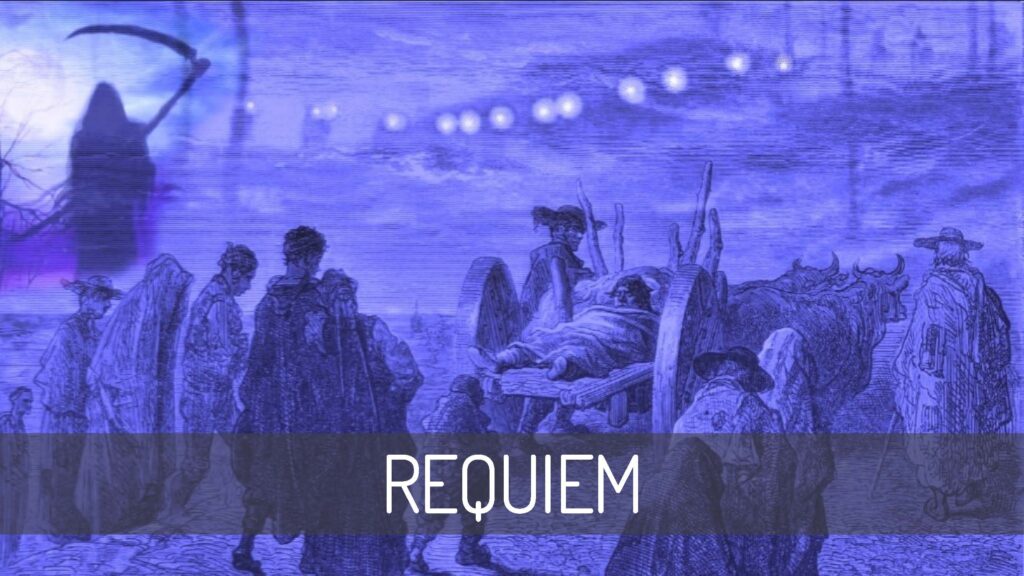
Duration of about ten minutes. The introduction starts with a series of lacerating chords performed with the brass. The author tries to describe the imaginary, dramatic sense of purely physical death, a situation that drags on for a series of measures that gradually tend to decrease, accompanied by a “lamenting” and meaningful bell. The piano closes this introduction with the same chords as the wind instruments. The final piano note is deliberately lengthened and marks the end of the dramatic event. Immediately afterwards the distant strings enter, drawing the beginning of another world, another dimension. The first vocal intervention is made by a very distant Choir, as if it came from catacombs, from very ancient times. This will gradually grow into a crescendo until the singing part of the Officiant, the one who will start the prayer, that is the first theme. The Officiant will then be joined by all the other choral and solo voices. The theme is developed as if there were two choirs that intersect and chase each other, to create a sort of contrast. The intent is to give a sense of universality to the issue. A central part follows where the contrast is between the various soloists and the same Choir. Soon afterwards a theme for orchestra alone starts which tends to create a sense of transcendence, of elevation and which will be the most important orchestral intervention of the entire Mass. It is a great moment of the piece, as beautiful as the initial theme, while the dialogue of the Choir is spine-tingling, almost imitating the evening rosaries linked to funeral traditions and responding with its own language, vaguely indistinct. After the orchestra the distant opening Choir comes back with a reprise of the opening theme; only the final text entrusted to the various “kyrie” changes.
Link for purchase: Amazon
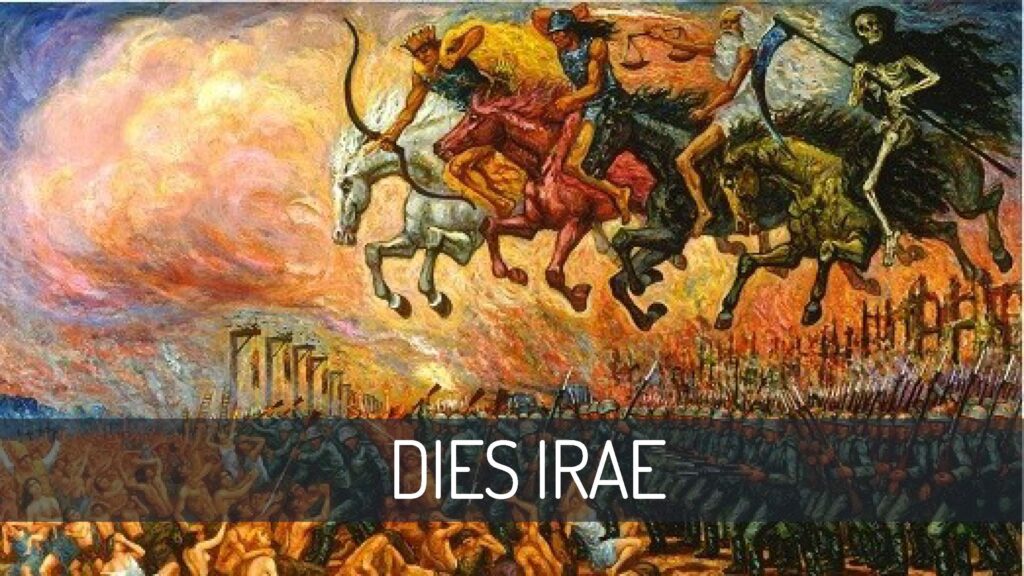
Since this piece is based on six texts, it lasts about eighteen minutes. For these reasons it has been divided into two parts. It is the longest and most dramatic piece of the entire Mass. It starts with interventions of the Choir of great sound impact. They are glimpses with wonderful interpretative flashes related to the great biblical meaning of the text. Here the timpani, the Choir, the brass, the sounds, seem to shake the heavens like an earthquake. These dramatic and powerful choral interventions will alternate with several recitatives of the soloists who, unlike many others employed in opera, will be supported by a very modern harmonization with a really theatrical impact, which will characterize their sequence in a decisive way. The second part focuses on a very sweet and charming theme performed by the female Choir and enriched by a brilliant intervention in Italian by the baritone, the Officiant. The finale of the piece is absolutely lyrical and dramatically beautiful, with soprano and tenor engaged in a difficult vocal performance of deep musical relevance.
Link for purchase: Amazon (first part) and Amazon (second part)
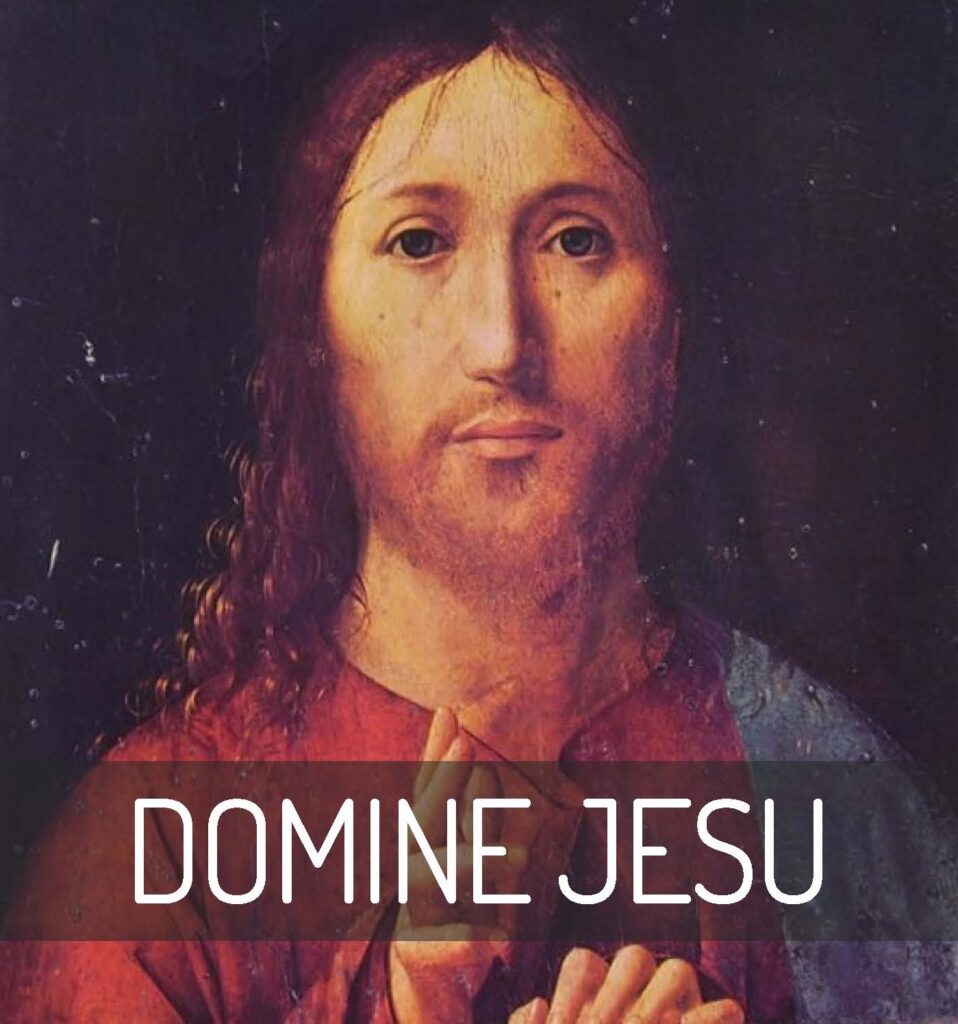
Beautiful and with several musical inventions. After a beginning where the setting is inspired by the places in the Middle East where Jesus was born, we get to a central part where to the various phrases of the soloists baritone and tenor a pressing male Choir responds imperiously emphasizing all the various phases of the text. At one point, however, a modern solution starts, both rhythmically and harmonically, that will make the music flow into an important ending.
Link for purchase: Amazon
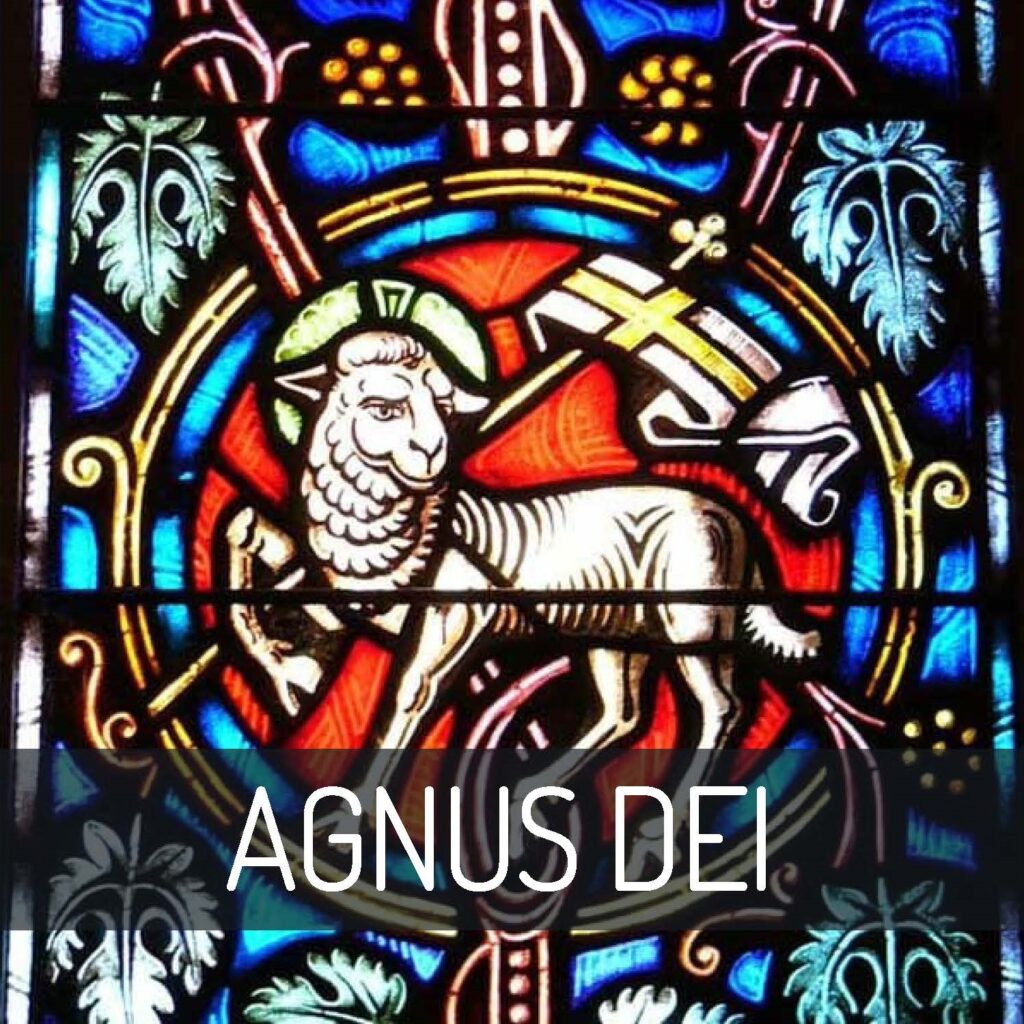
On a very short text a wavering music unfolds, made up of short musical situations, until the central part. Here begins a lyrical theme performed by the orchestra, with a few interventions of the Choir and the baritone who integrate in the main theme, until the explosion of the same Choir in the final passage to soften gently in the last bars.
Link for purchase: Amazon
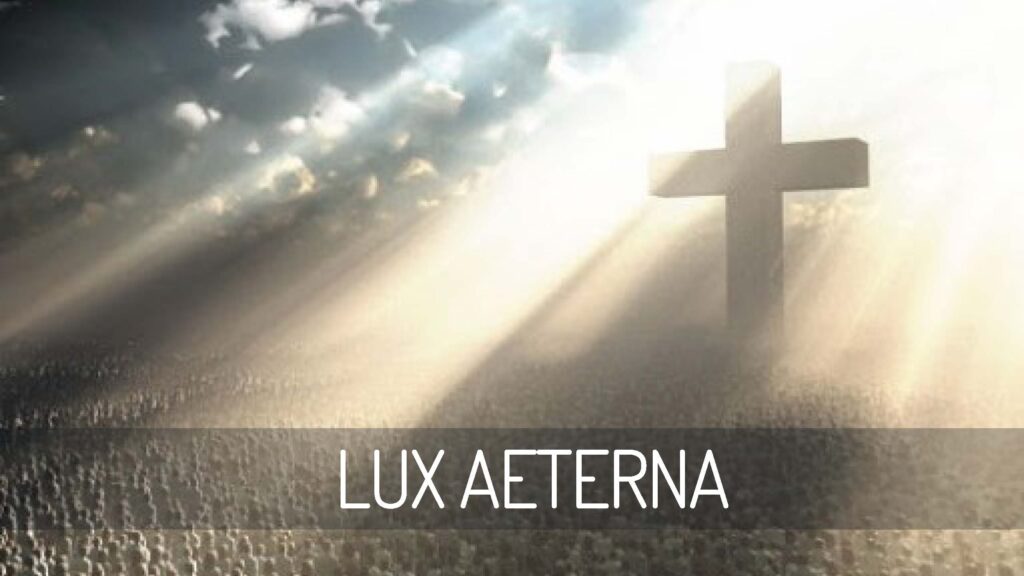
This is genius in its own way! It starts with two pianos engaged in a jazz style introduction. The author drags the musical discourse for a while, linking it to the very few lyrics and doing it with a remarkable inventive variety to end up, halfway through the piece, in a wonderful theme interpreted by the soprano and the Choir. The final part recalls a soundtrack. Perhaps the most modern and sinuous passage in the Mass.
Link for purchase: Amazon
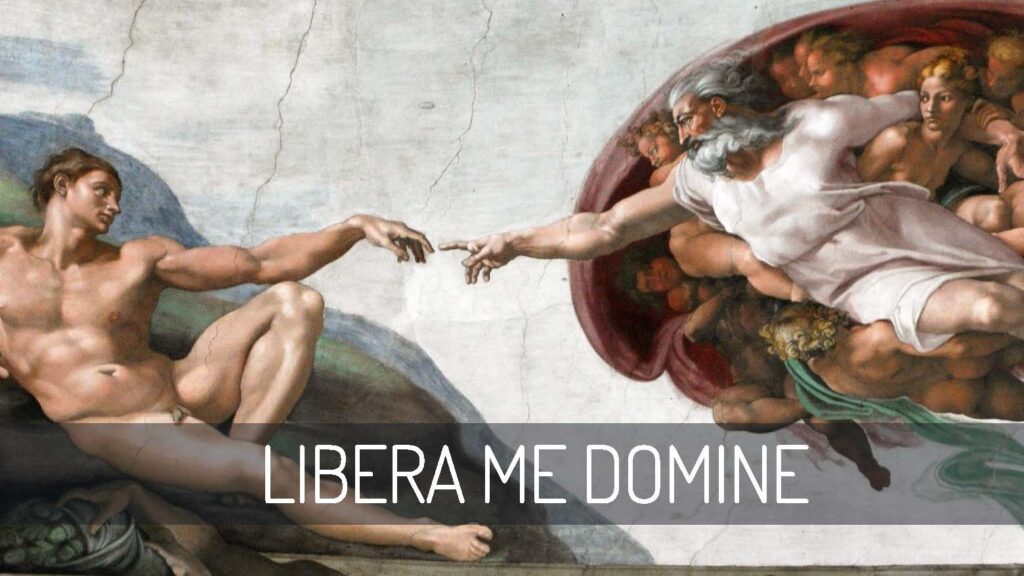
It’s the final piece. The author begins it with the same theme as the Requiem. It’s a real deliberate reference. The aim is the unity of the global inspiration. Soon afterwards, the theme follows one of the most musically fascinating developments in the work where, over a daring harmonization, soloists and Choir literally catapult themselves into one of the most evocative and dramatic musical interpretations. This is followed by a brilliant invention where, on a beautiful musical carpet, the text stops being music and becomes words, all this entrusted to the Officiant, a baritone. This central part will be repeated with different lyrics to lead to a finale of great, emotional collective sadness. A masterpiece!
Link for purchase: Amazon
Ciato wishes to express some acknowledgments: “My sincere thanks all the enthusiasts who will choose to listen to this wonderful and colossal work and very special thanks to my friend
ANDREA TRAPASSO
composer and exceptional sound technician, who for years contributed
to its complicated realization”.
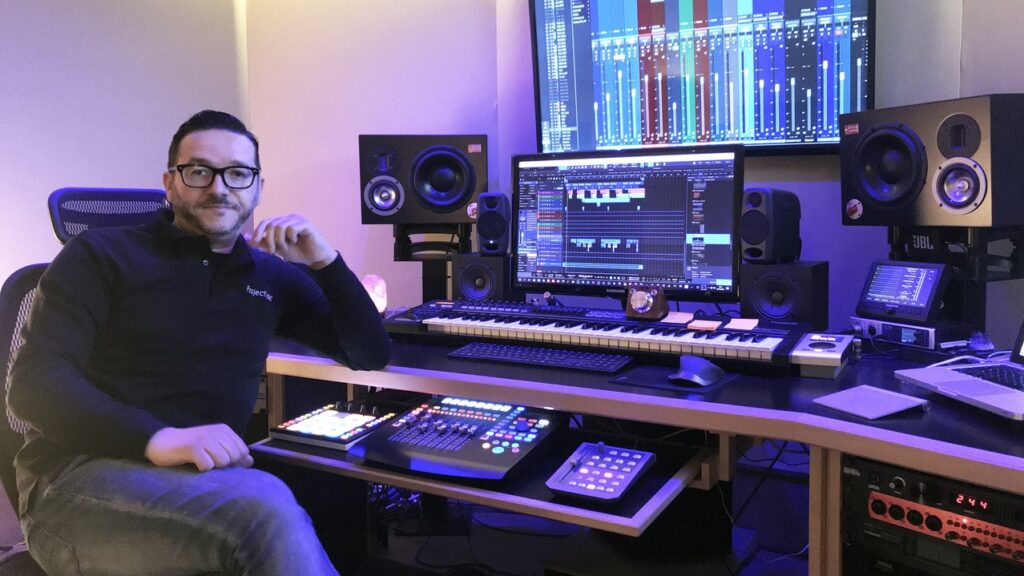
L’ARTE DEL SUONO
recording studio via Donizetti 21 Cantù (Como)
Videos, films, music and songs production
andrea@artedelsuono.com
“Finally, I wish to thank my dear friend Raffaele Bracciali so much for his fundamental economic contribution to this project”.
The performers of the Messa da Requiem:
CHOIR
The Choir, as already mentioned, plays the most important role: the real protagonist of the Mass together with the orchestra.
ARNALDO CIATO
It is the same author who plays the role of the Officiant in the Mass.
JAE HEE KIM

A mezzosoprano, she graduated in singing in 1994 at Shung-Shin University in Seoul and obtained a diploma at Santa Cecilia Conservatory in Rome in 2002. She specialised at the Laboratorio Lirico of the Arts Academy in Rome in 2003. She has won several competitions and taken part in the staging of baroque and contemporary works. Her repertoire is very wide: from De Falla to Monteverdi, from Puccini to Mozart, to Verdi. She has given lieder concerts and recitals in Italy, Germany, Austria and South Korea. She was a teacher of singing at Chung Un University in South Korea. She is currently a soloist of the Italian Opera Ensemble and a teacher at the Association “La Città Sonora” in Garbagnate Milanese – Saronno (Milan – Varese).
YUNKYU KIM

A tenor, he graduated in Music Education at Sungkyul University in South Korea. He graduated in Choir Direction at G. Donizetti Academy in Masate (Milan).
He has sung in Handel’s ”Messiah,” Mendelssohn’s ”Paulus”, Haydn’s ”Im Anfange schuf Gott Himmel und Erde” from “The Creation”, Beethoven’s ”Ninth Symphony” and ”Solemnis”, G. Donizetti’s ”L’Elisir d’amore”, G. Verdi’s “LaTraviata”, “Aida” and “La Forza del Destino”, P. Mascagni’s “Cavalleria Rusticana”, R. Leoncavallo’s “Pagliacci”, W. A. Mozart’s “The Magic Flute”.
He is currently attending A. Boito Conservatory in Parma.
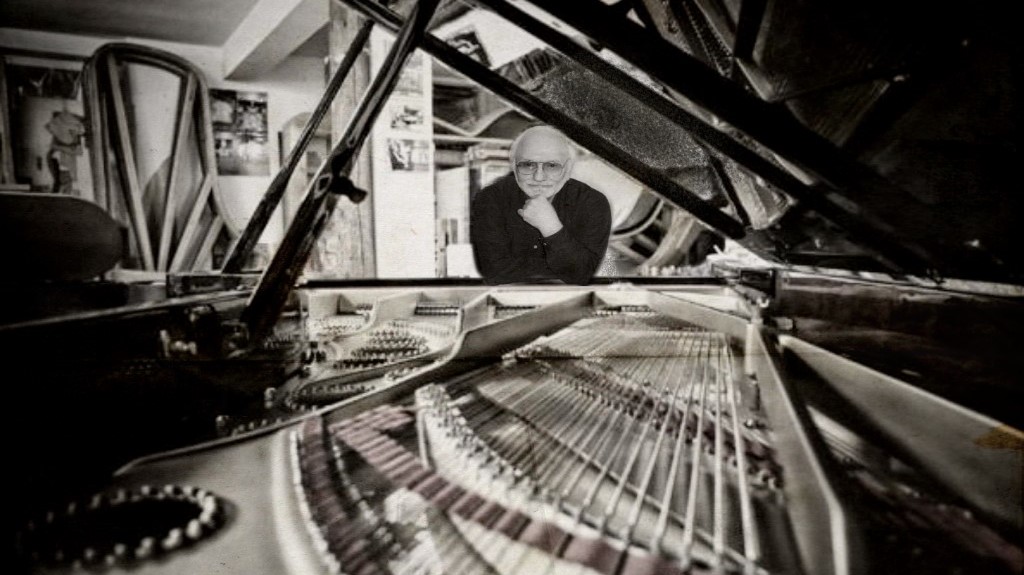
I Notturni
the 1950s, ‘60s, ‘70s, ‘80s, ‘90s
Ambient music, or often referred to as “descriptive music”, I Notturni are among the most important and most beautiful pages of all Ciato’s compositional material. Unfortunately, due to mishaps, the songs could not be produced in a recording studio and with the planned line-up: piano, bandoneon, bass and drums. They were intended to be a tribute to Astor Piazzolla (who died in 1992) with whom Arnaldo Ciato had recorded, as a pianist, the LP “Chador” in Milan in 1978; indeed, for many of these nocturnes the use of the bandoneon or the accordion has also been foreseen. There is only one music cassette with these compositions left where Ciato recorded himself with makeshift means and with an upright piano that was not perfectly tuned, because his intention was only to set up a guide for the other performers. During several rehearsals with the quartet the atmosphere was international. This absolutely precious tape has been recovered and digitised, so now you can listen to it at least in its musical aspects. The people who could listen to the quartet’s rehearsals confirmed that some of these nocturnes are genuine masterpieces. Of course, Ciato’s piano performances alone can but give a very partial picture of these pieces; they were about fifteen at first, but we only retrieved nine of them.
Any musician who should decide to listen to these pieces will be able to grasp or get more easily close to the musical atmosphere and structure of I Notturni, thanks to some important notes explained hereafter. You might sometimes come across pieces that include the exposition of the themes with the piano, with various overlaps of the bandoneon and others in which the theme will be played by the bandoneon with the harmonic background of the piano, or pieces in which the theme will be performed in unison. In all the parts where the piano does only harmonic accompaniment it is intended that, over it, someone is improvising. The taste of improvisations has obviously a jazzy style. The soloists, besides the piano (exactly what we hear) are the bandoneon and the bass. The drums have the function of rhythmic support. Some of the empty bars are filled by only the bass or only the bandoneon, as well.
Unfortunately, after all this work and dozens of rehearsal sessions, in 2001 Ciato was hired to write the music of the musical revues by the Theatre Company “I Legnanesi”, and for about 20 years he has no longer had the time to move this project forward.
The hope is to be able to complete it somehow, thanks to the discovery of this music cassette.
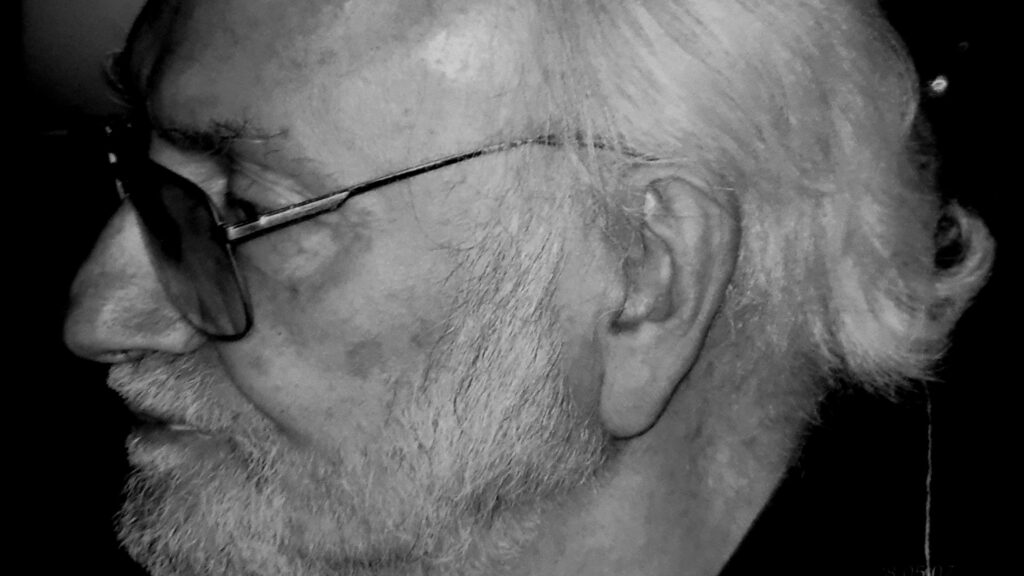
NOTTURNO VALSE (1999)
This is how the author presents it: “A night cut through by livid lights, a sound of musette rising from the fire-less fireplaces to the distant stars of an ordinary summer and over a creased lawn, where there is hardly anyone left but the dreamy suburban atmosphere of a nocturnal Paris. An old merry-go-round is spinning wearily, it’s spinning now alone with a few rare couples saddened by the time of day and by the long shadows of the evening, it’s spinning at longer and longer, insistent intervals… while the creaking of its restarts, at first slow, then trudging, then faster, shakes its breath… and you wonder: will it make it to the last race?”
DIALOGO NOTTURNO DI DUE PARACARRI SUL TIBIDABO
During the period in which the author worked with his orchestra in Barcelona he was intensely involved in the Catalan atmosphere, so one night a fantastic image of a hypothetical and extravagant dialogue between two bollards, “father and son”, germinated in his mind. On the wings of fantasy Ciato set this paradoxical representation to music giving it a particular structure: after a very short introduction the bollard “father” (bandoneon or accordion) articulates a musical theme that is immediately taken up by the bollard “son” (piano). The whole thematic part sees the two protagonists engaged in throwing musical fragments at each other as if in a joyful repartee. Sometimes they proceed in unison. The end of the thematic part has a more melancholic flavour and it is the “son” who dictates the theme then taken up by the “father”. In the central section, instead, the solo performance prevails. Here the bass embodies the role of the “father”, not the bandoneon. It will be indeed the bass to start the piece, suggesting in a few measures the theme to be developed, and the “son” (piano) no sooner said than done will grab the thread and develop it for a good stretch, leaving the task of concluding it to the “father” (bass). Eventually the two will pick up the initial theme.
NOTTE CERIANESE (1998)
The author describes musically the sensations experienced listening to the soft voices, the breaths, the inner turmoil and the silences of a night spent walking alone in the woods and fields of his village. This composition opens with the piano alone, then accompanied in the central part, when the classical inspiration flows almost seamlessly into jazz, also by bass and drums, to end again with the piano alone, recalling the initial theme.
NOTTURNO PER PIANO E BANDONEÒN (1985)
A very classical-style tune. The theme is entrusted in the first half to the piano to which, in the second half, also the bandoneon (or accordion) is added. Initially the task of the bandoneon is to contrast the theme expressed by the piano with a series of fast figurations of a completely different style, almost in jazz form, a sort of counterbalance to the classical nature of the piece. The two things complement one another, resulting in a curious dialogue. As on other occasions the central part has a jazzier prominence.
LES PLANETS DE LA NUIT (1962)
It is an imaginary night vision of strange and unknown planets chasing each other in the immense darkness of the sky. This happens in a frantic way, sometimes joyful, sometimes threatening. After a long musical journey among these fantastic events everything suddenly disappears and the image glides on a mysterious, silent planet, as if wrapped in fog and full of an indescribable and melancholic charm. From here a completely different musical theme accompanies the performance until the end. A dreamy theme that – says the author – seems to cloak the enchanted surface. It is as if the same music reverberated over the planet the wonder and magic of childhood and a lost dream.
MEMORIES OF LITTLE BUBU (ma non era un cane) (2001)
It’s an intense elegy for the death of a dog. Bubu was a highly intelligent little mutt, a sort of medium-sized bobtail. Found in the street, victim of an accident, he lived with the author for at least 12 years. This is how Arnaldo Ciato introduces him: “Bubu was not a dog. My relationship with him didn’t involve daily pleasantries. We looked at each other at length and silently, understanding everything about each other. His dark and very human big eyes and his strange moans when I stared intensely at him, as if he wanted to talk to me, led me to believe that Bubu was something more than a dog. After he died, of old age, I put him in a small coffin and buried him in my woods near the house where I live. We talk to each other every night.”
AUTUNNO A MILANO
Composition dedicated to the wonderful “greyness” of an October in Milan where, in addition to the usual fallen leaves and the gradual fading of daylight, we perceive a general and natural sense of sadness that envelops the walls of the city. This atmosphere softens everything and creates a melancholic musical inspiration imbued with poetry.
MEZZANOTTE IN PAESE (1948)
It is the “most ancient” of Ciato’s nocturnes. It was born after Ciato’s discovery of French musical Impressionism when, at seventeen, he put Debussy’s prelude “Des pas sur la neige” in his piano exam programme, struck by the magical image of the “steps on the snow” sculpted by that prelude. Deeply influenced by those harmonisations and the images that characterize them, he decided to try to set to music another kind of vision and colour another picture. So was this nocturne born which holds all the possible, imaginary and incomprehensible voices of such a context. The author “photographs” a small country village – his own – of other times, inhabited by little more than two thousand souls, and listens to and conveys, in its dark and deserted streets, the midnight toll of the bell tower, amplifying all the nocturnal lyricism of that fascination. It’s definitely the most “Debussian” and juvenile of the nocturnes.
(Listening: first with piano alone, then with the quartet rehearsal)
REMEMBER RAG IN THE NIGHT
This is a very lively ragtime. Ragtime was a piano genre within jazz that lasted for about thirty years from the late 1800s to the early 1900s.
For the pianist it is technically difficult but extremely fascinating and exciting. Since these performances took place in America in the “boîtes”, typical nightclubs of the time, Ciato decided to put this composition of his in the Notturni and close the entire series with this piece and its electric atmosphere.
(Listening to a fragment of the piece coming soon)
The performers
Here are the names and photos of the performers, some of whom are very young, who have decided to undertake this worthy work of recovery and who aim at finding a way to record all the pieces, with the ensemble envisaged by the author.
MARIANNA MOIOLI
Piano
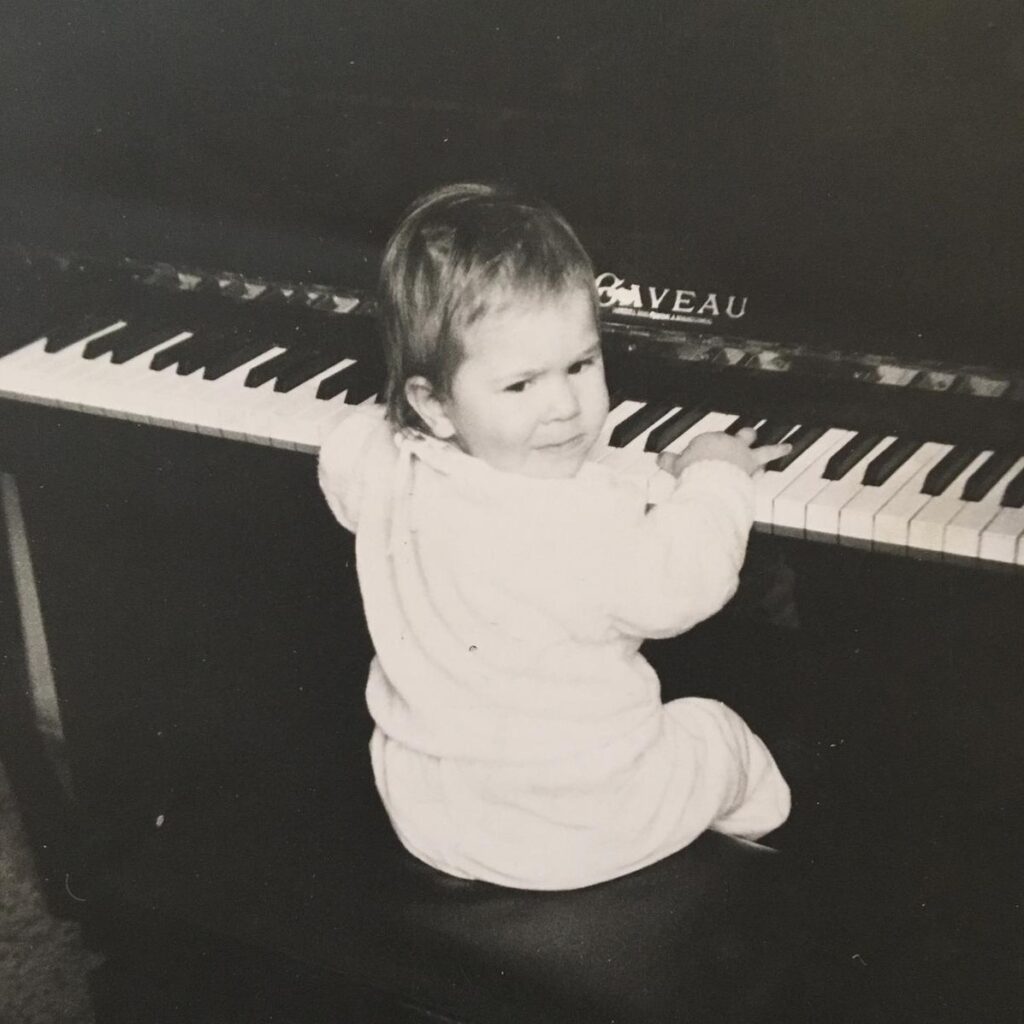

Growing up surrounded by music and musicians – either professionals and amateurs – Marianna began studying the piano for fun, at the age of 5. She then discovered that instrument as a potential orchestra to invent sounds, pieces, songs. At the age of 11 she began her path at the Conservatory and during her course of studies she became passionate about chamber music and the study of harmony: sharing the musical moment and paying attention to the harmonic understory of each piece have been since then decisive elements in her pianistic choices and not only. She has collaborated with Yamaha Music Europe as a pianist (Frankfurt Musikmesse 2016) and as Key Teacher (teacher trainer) she teaches in music schools applying the Yamaha method and in compulsory schools with the Orff-Schulwerk pedagogical line (three years of training c/o Donna Olimpia in Rome). In 2014 and 2015 she collaborated with the Fondazione Orchestra Sinfonica of Sanremo to conceive and present, as a narrator, a children’s story inspired by music from the classical repertoire (Ravel in particular) performed live at the Teatro del Casinò of Sanremo. In 2016 she was selected to participate in the Clinics of Boston Berklee College of Music at Umbria Jazz during the Festival, where she studied with jazz pianist Kevin Harris. Passionate about writing and contemporary art, she finds her sources of inspiration in nature and everyday beauty.
FLAVIANO BRAGA
Bandoneon – Accordion
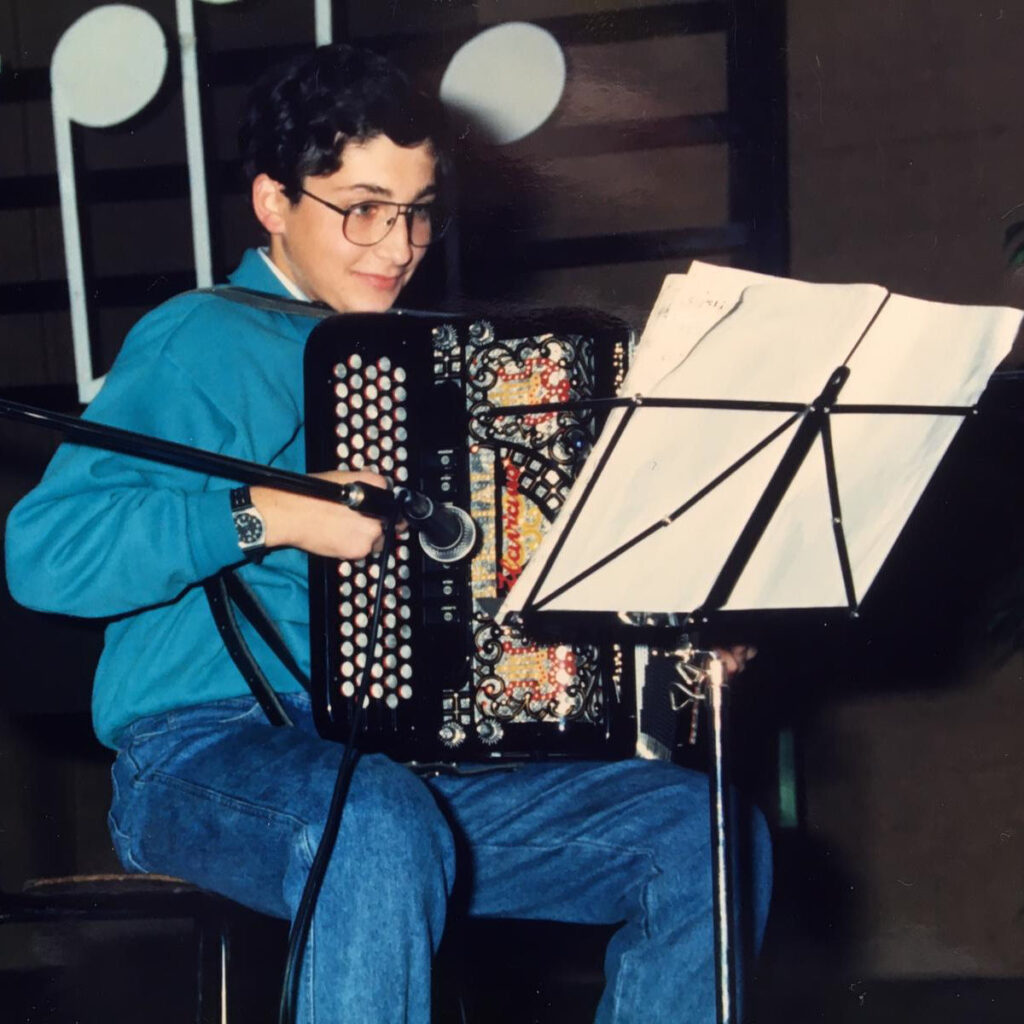

He approached music at an early age singing with his father, an accordionist for pleasure, then developing a passion for the accordion.
He began his studies at the age of six under the guidance of Maestro Mario Radice who made him participate in several international competitions, getting significant placements.
Meeting Eugenia Marini, an extraordinary accordionist, was fundamental in his training.
He is credited as one of the most versatile and intense accordionists on the national scene, eclectic, refined, capable of ranging through the most contemporary genres while knowing the tradition thoroughly.
In 1992 he began a long collaboration with Livio Gianola, exceptional guitarist and composer and with him he realised numerous concerts and tours in Italy and abroad in the field of flamenco.
He has been collaborating with Max De Aloe for over 15 years ranging from jazz to tango.
He has played with various musicians such as Arnaldo Ciato, Iva Zanicchi, Eugenio Finardi, Marco Detto, Stefano Bagnoli, Marco Ricci, Giovanni Giorgi, Francesco D’Auria, Giuseppe Canone, Flavio Minardo, Simone Mauri, Meno Porcu, Claudio Taddei, Antonio Canales, Oscar De Los Rejes, Cristina Benitez, Mara Terzi, Antonio Davi, Roberto Olzer, Tazio Forte, Cecilia Gomez, Marco Berti.
He has played in many Festivals in Italy, most European Countries, Turkey and Japan, where he performed in the most important theatres of the Country, such as Tokyo Bunka Kaikan, Kobe Kokusai Hall, Festival Hall Osaka.
In 2010, fascinated by tango, he embarked on a new and exciting musical journey with the bandoneon.
FABIO DE MARCH
Bass


He approached the world of music as a child thanks to his father, a drummer. From the age of six he studied guitar and piano and then devoted himself definitively towards the end of the 1960s to the study of electric bass. Since the beginning of the 1970s he has been playing in various pop-rock groups with some of which he accompanied various pop singers on tour and others with whom he opened concerts for various “prog” groups such as Orme, Osanna, Banco etc.
In 1974 he began studying double bass at G. Verdi Conservatory in Milan under the guidance of Maestro Ezio Pederzani and at the same time deepened his studies on jazz harmony and instrumental technique.
He joined the Jazz Club Gallarate and distinguished himself accompanying soloists guests of the club, including Tony Scott, Franco Ambrosetti, Stefan Grossman, Franco D’Andrea, Claudio Fasoli etc.
He then began his professional activity mainly as a free lance alternating jazz, pop music, concerts and teaching.
A multifaceted artist whose career is studded with important collaborations both in Italy and abroad. He has played with great jazz musicians and participated, from 1985 to 2014, in important festivals and reviews dedicated to jazz. He has been a member of many big bands including Mallets, Brushes and more, Artist’s Dream Project (with Lars Jansson), Wally’s Big Band of C., Big Band Parade, Dino Siani Big Band, Ciato’s Big Band, and many others. He has worked in several radio and television productions. As far as pop music and theatre are concerned he accompanied I. Zanicchi, T. Dallara, Jenny B., Magic Music Circus, N. Midani Show, W. Chiari, B. Martino. With the Ciato and Ciato’s he took part in the shows “Omaggio a Edith Piaf”, “Da Vienna a Broodway”, “Spirituals, Gospels and Worksongs”, “I Legnanesi”.
He has arranged and orchestrated for the theatre and collaborates or produces as a musician, author and arranger with many record labels and publishing groups.
His jazz and music discography is very rich, including Live in St. Louis. Vincent – Ciato’s Big Band – Omaggio a Benny Goodman – G. Tirincanti Group, Ciato Live at Capolinea- and Sentiero -Arnaldo Ciato Orchestra-.
FABRIZIO FERRARA
Drums


He picked up the sticks at the age of 4 and then began his studies, three years later, at the Civica Scuola di Musica in Cinisello Balsamo (Milan). He was born in a family of amateur musicians and grew up listening to the swing of the great American big bands and jazz, later approaching pop. Thanks to his parents, who were part of the band “Ciato and Ciato’s”, he had the opportunity from an early age to experience first hand the vast musical world of Maestro Ciato, listening to rehearsals and concerts and then starting to accompany him occasionally in musical evenings with a small group. At the end of his studies at the Civica, he continued his music education with Giorgio Di Tullio, exploring genres such as fusion and latin-jazz, which he then began to play with his group “Hot Dogma”. His years of study at the Civica introduced him to Maestro Paolo Favini, with whom he has collaborated regularly since 2009 and thanks to whom in 2019 he had the opportunity to play with Eric Marienthal, saxophonist of Chick Corea’s “Elektric Band”. The same year in December he accompanied the singer Karima in the orchestra “Evolution Band” of Paolo Favini, directed by Maestro Maurizio Dones. Another important collaboration was in 2017 when he played with guitarist Luca Colombo in the concert “Sunderland” for the presentation of the album having the same title. During the years of collaboration with the percussion band “Vulcanica” he participated as a guest in television programmes on Rai and Mediaset and since 2013 he has worked occasionally as a substitute of Stefano Re. Since 2008 he has combined teaching and concert life.
Film music
In Ciato’s music it is possible to identify some tracks as film music.
“Aria per Elisa”, “Long way to the sacrifice” and also some Notturni can lend themselves to be soundtrack of images of different kind as they are descriptive music.
Il Ciato
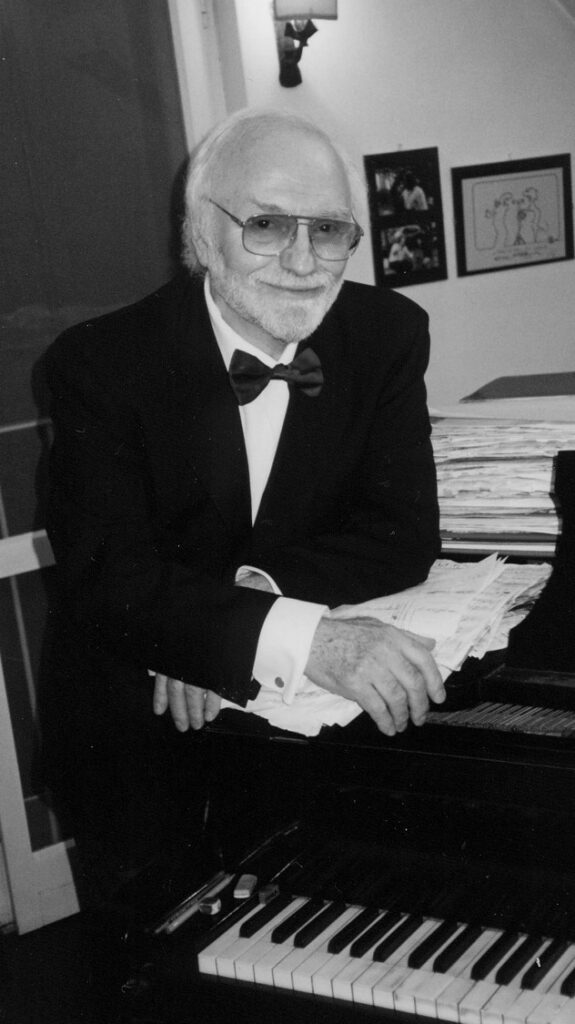
Let’s make things clear now satisfying a curiosity of many people: Ciato is a stage name, adopted by the artist after being by chance called that when he was a child. It comes from an old dialect term, “Ciatan”, later transformed into a more refined and Italianised form, Ciato. The recondite meaning was, at the time, that of “goody-goody”! This pseudonym has accompanied the author throughout his life and has become inextricably linked to his name: he is actually known as Arnaldo Ciato and even today very few people know what his actual surname is.
“This is the ordinary story of a musician, described and regarded by other musicians of his same generation as potentially one of the most important of the second half of last century, as regards pop, nocturnal and “solitary” music, also thanks to his long and stubborn battle aimed at including in pop music a possible fusion between classical and jazz language. The musicians who have listened to his compositions have referred to them as: <great ambient, descriptive music, very close to a modern romanticism kept over a half-century journey.> Unfortunately, however, Ciato is also one of the most unknown musicians in relation to his real value.”
(This quote was taken from the booklet “Il Ciato”, which briefly focuses on the author’s musical path. To continue reading it, it is possible to download a Pdf version at the following link)
link
Appendix
Since Ciato’s music is countless and involves completely different musical genres (jazz, rock, pop, funk, soul, R&B), it is our intent to insert some pieces, also out of context, in a new section of this site as soon as we get them.
For any requests or explanations regarding the contents of this site, please write to
arnaldo.ciato@gmail.com
Acknowledgements
“My warmest thanks to
MARIA GRAZIA GOTELLI
former passionate singer of “Ciato’s Big Band” for a few years, a very good teacher and journalist, who with great sensitivity
took on the important task of reviewing and translating into English the complex text of this site” (Ciato)
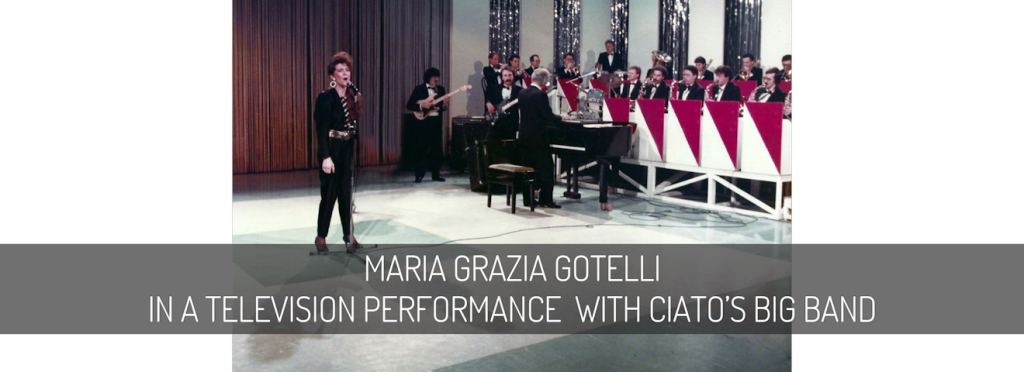
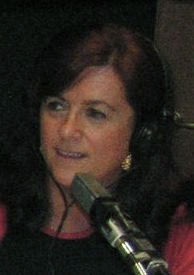
English teacher in Italy and abroad, bilingual certified, free lance journalist enrolled in the Official National Register, translator of educational material and cultural publications, in the past for many years singer and author of the literary part, enrolled in the SIAE.
mgraziagotelli@libero.it
